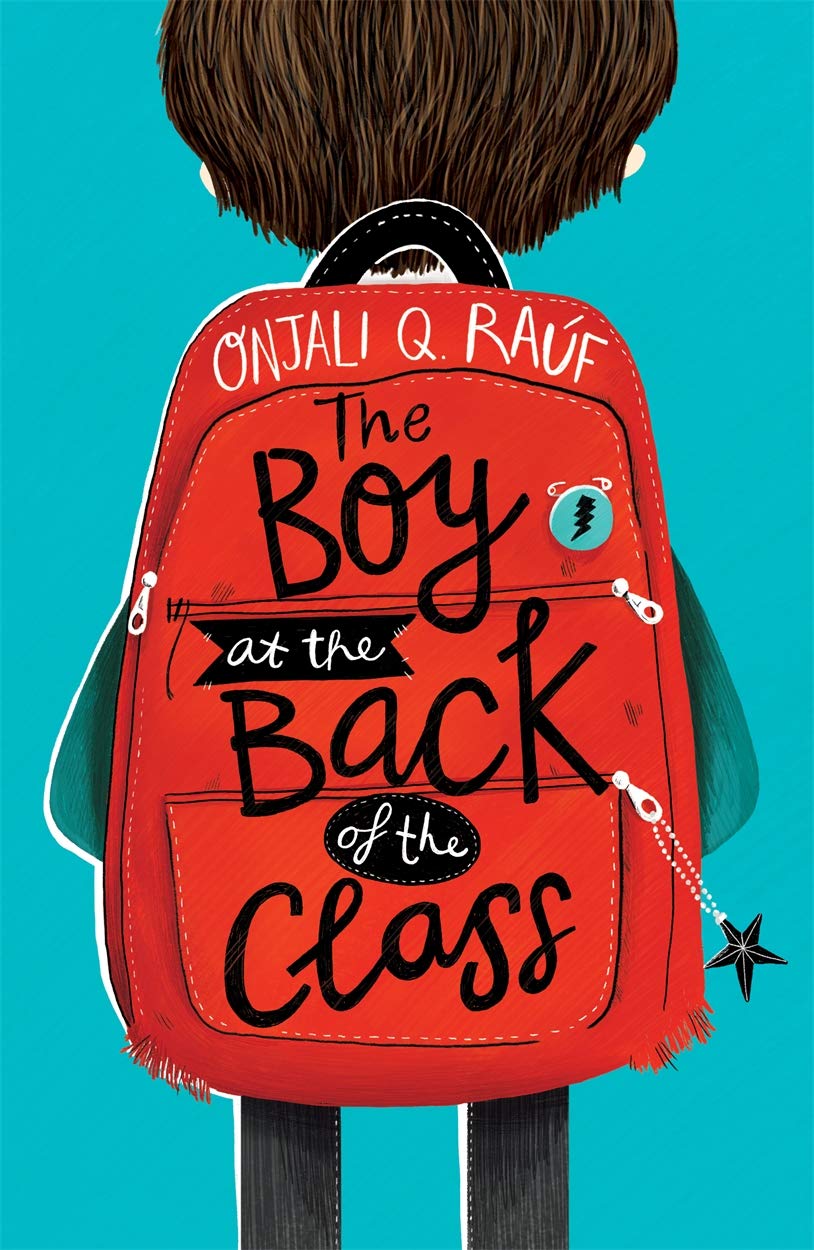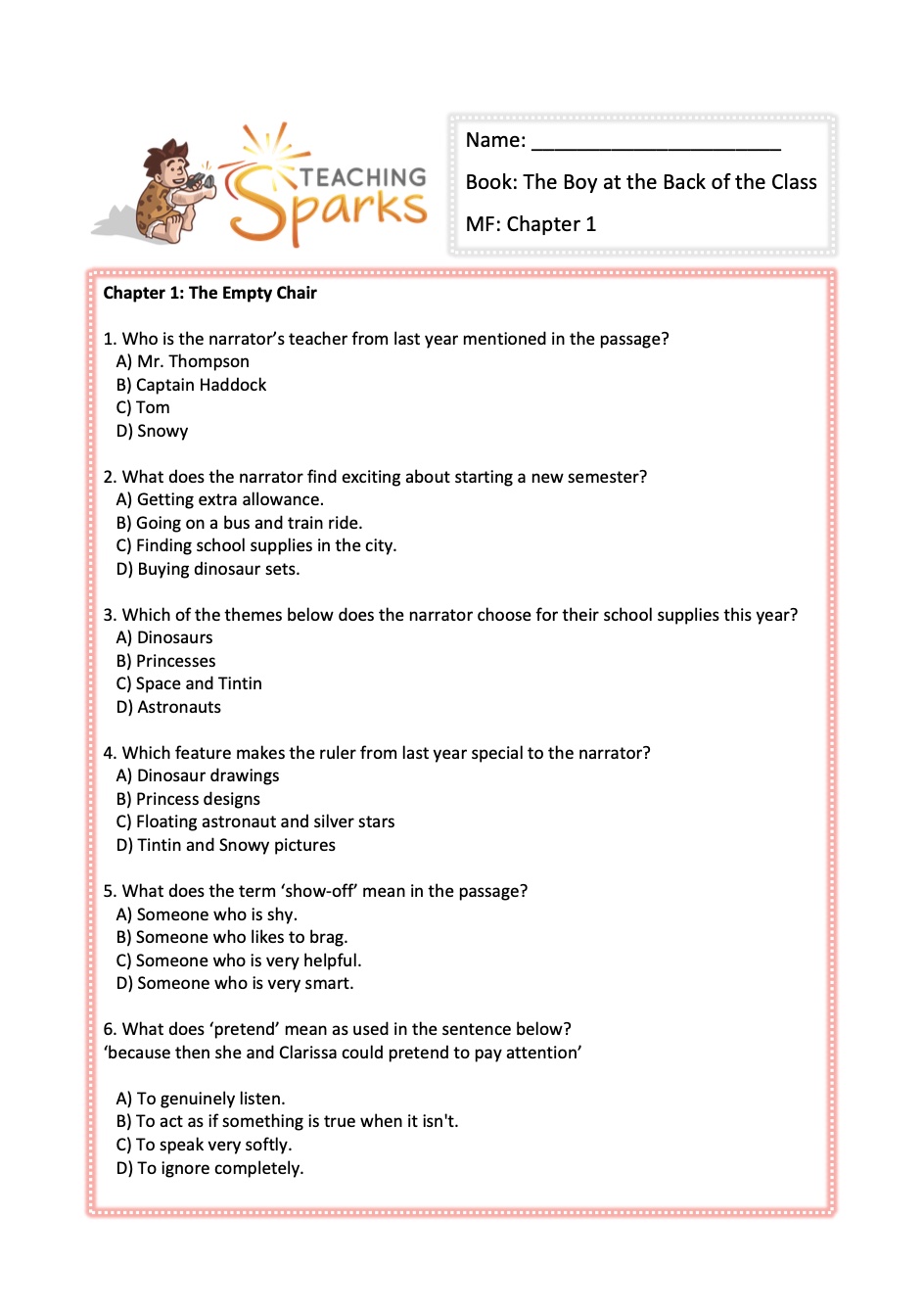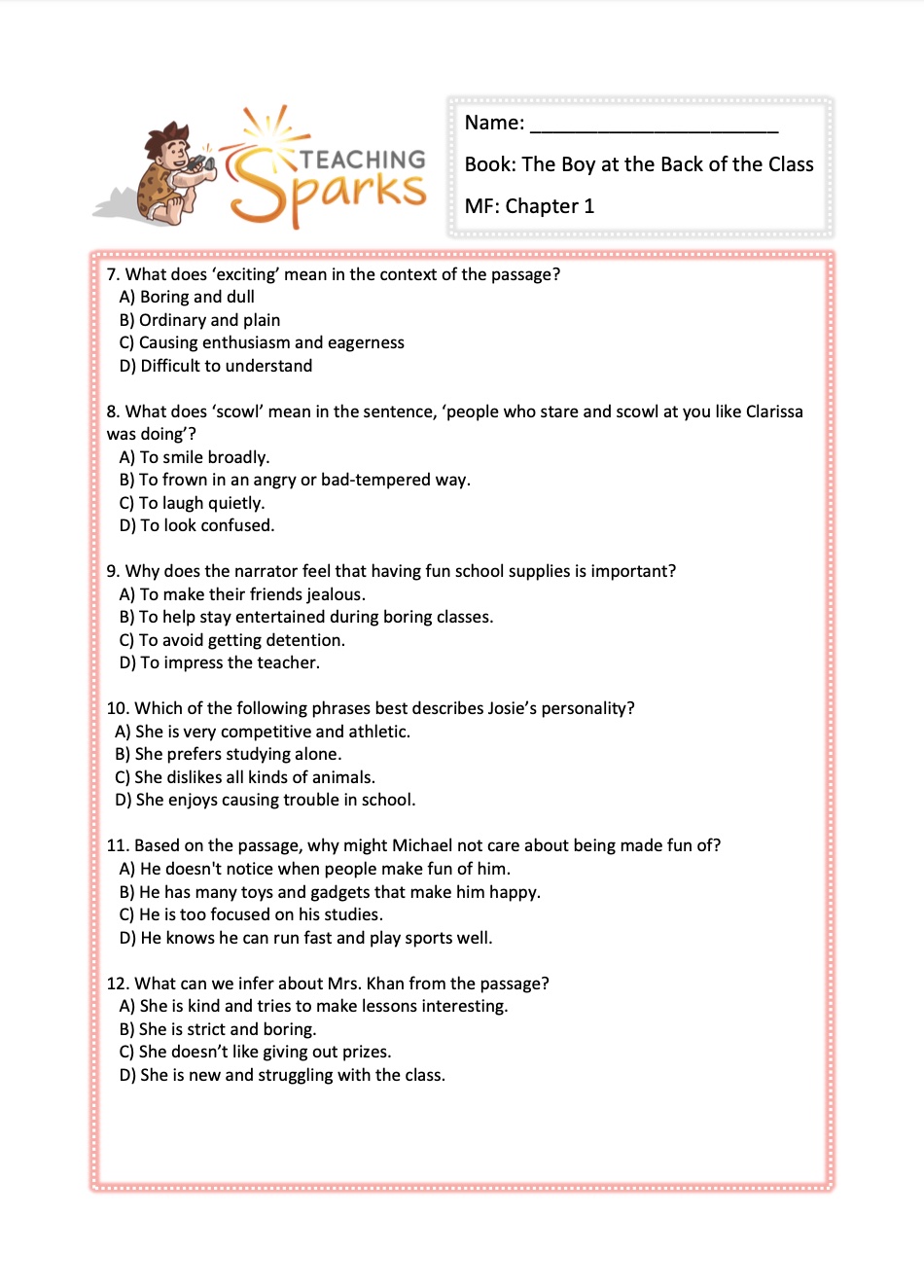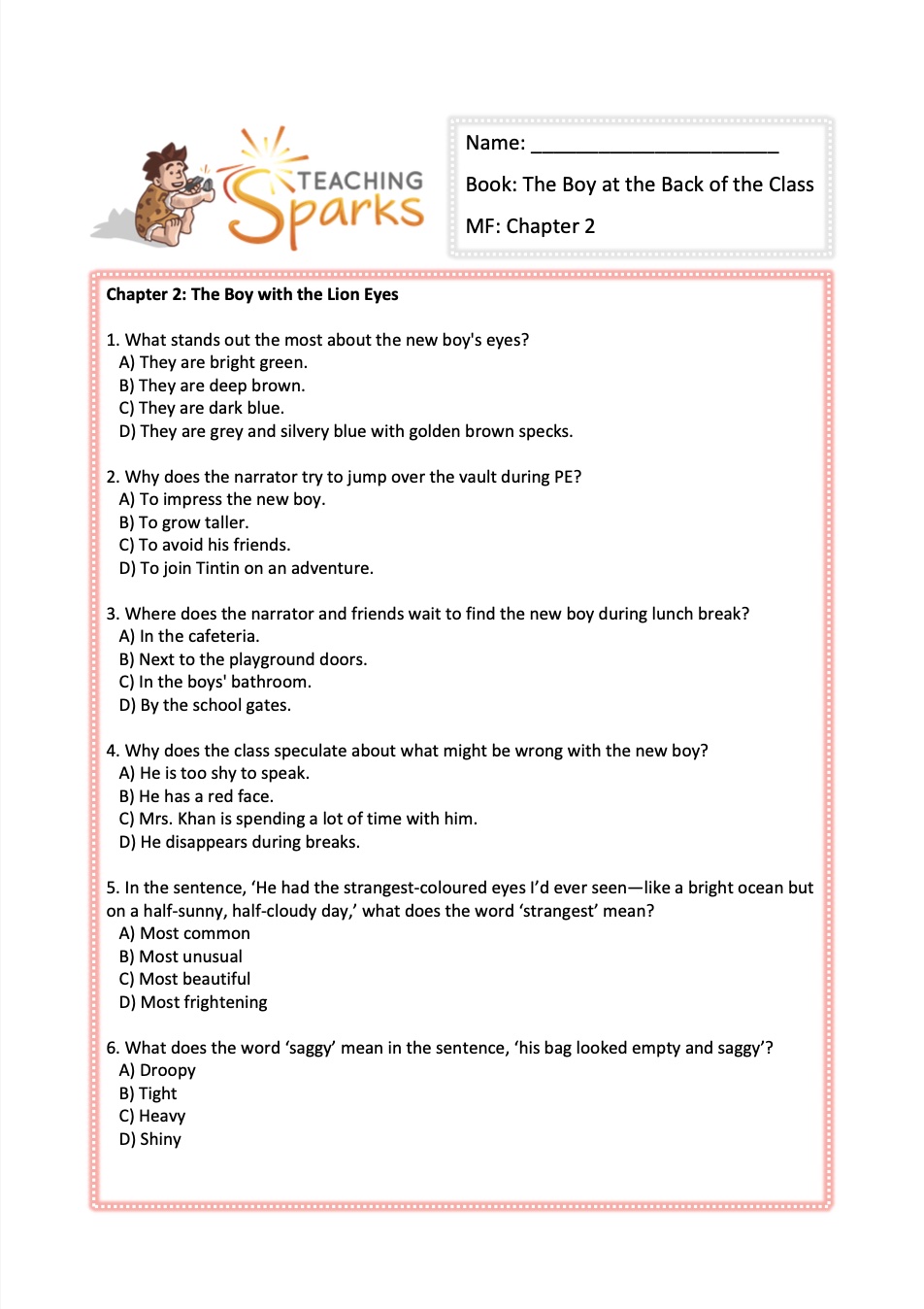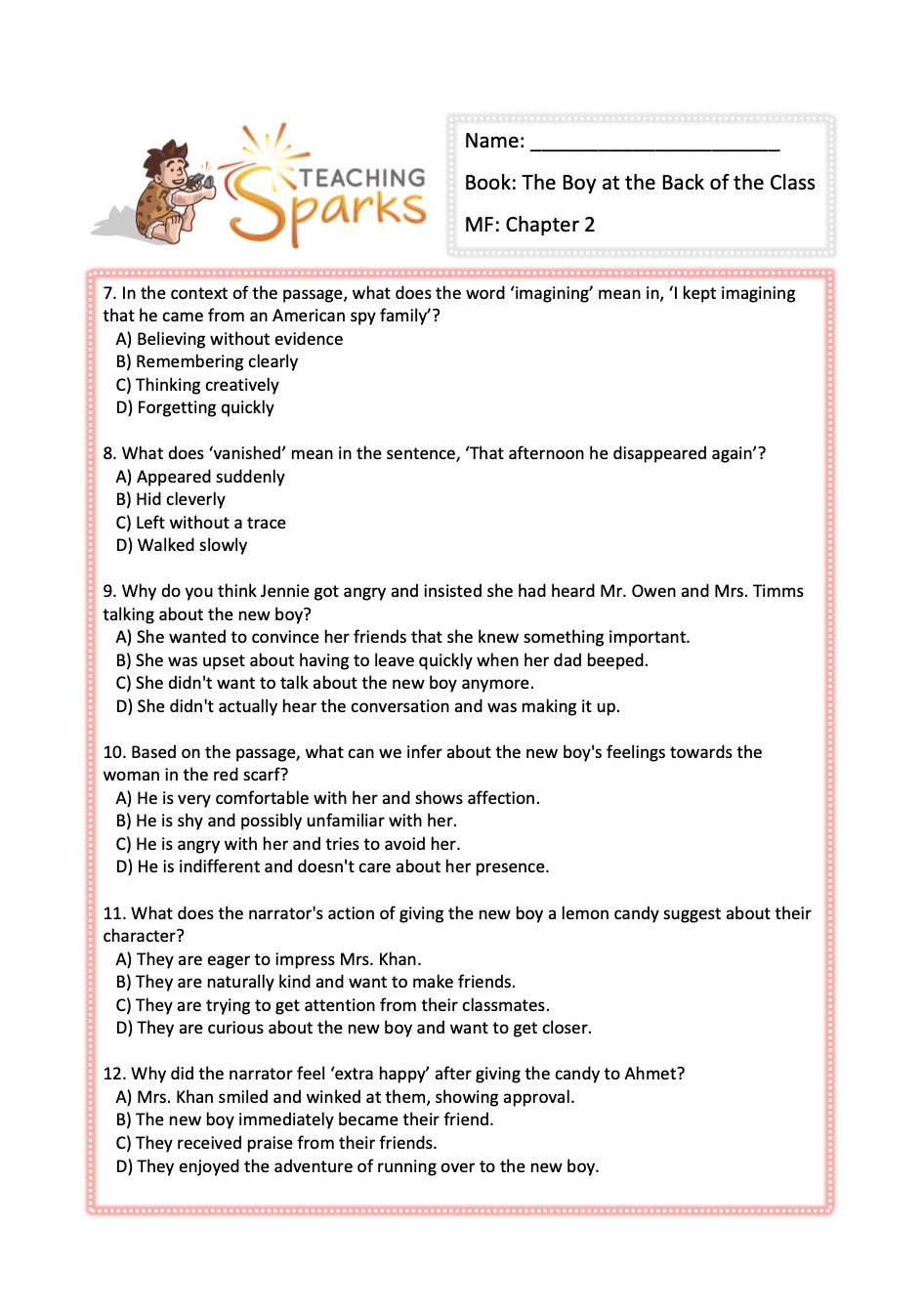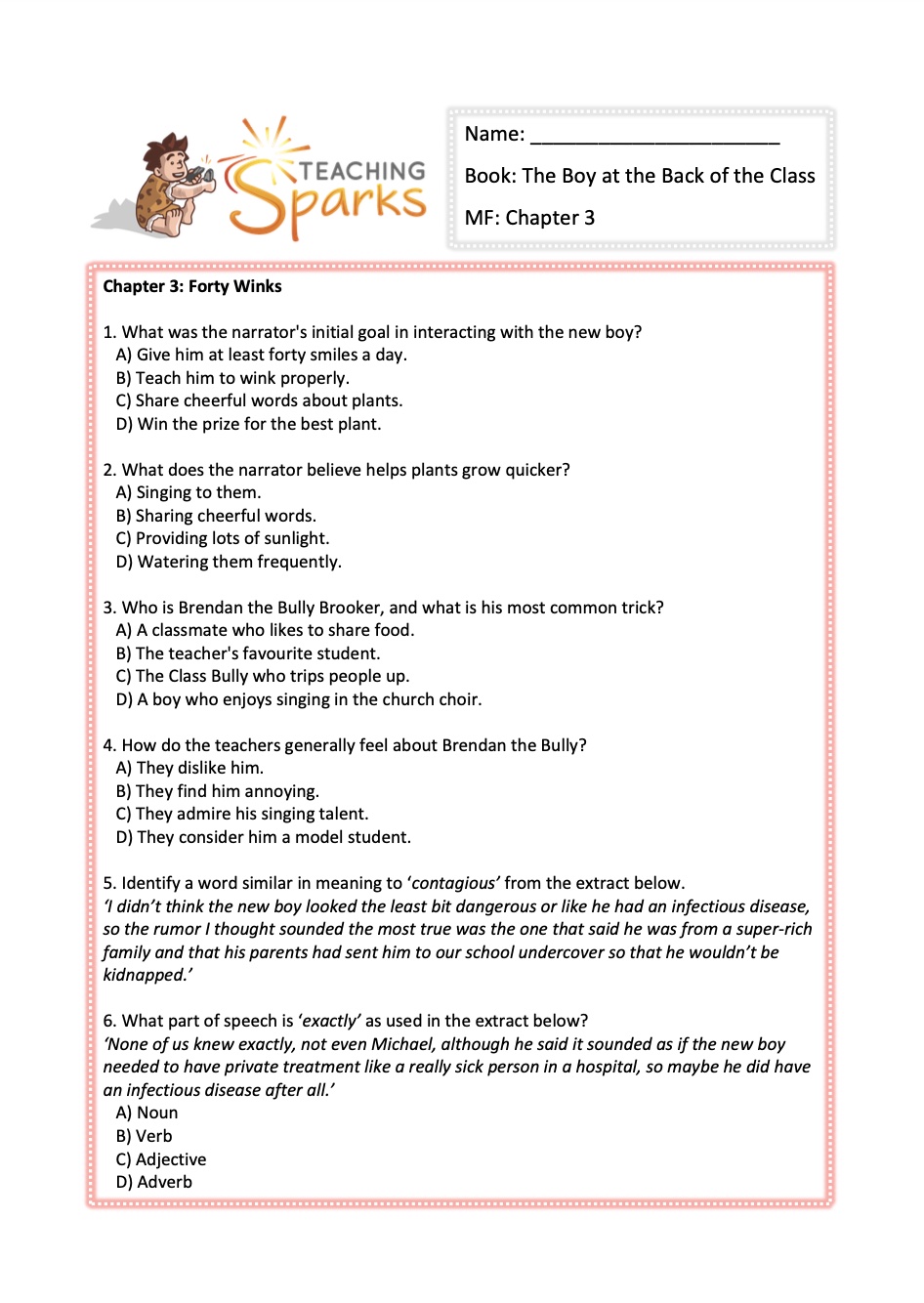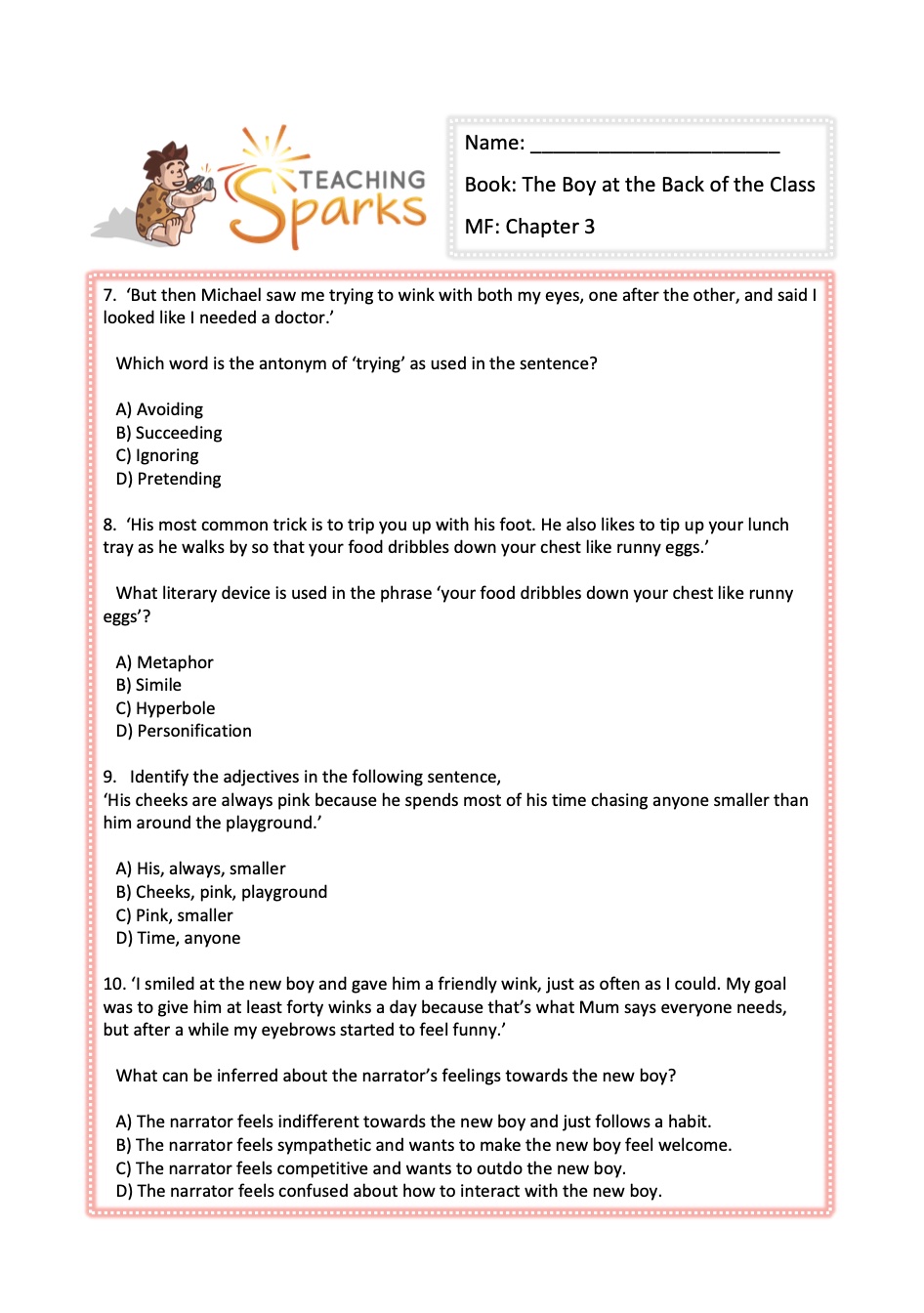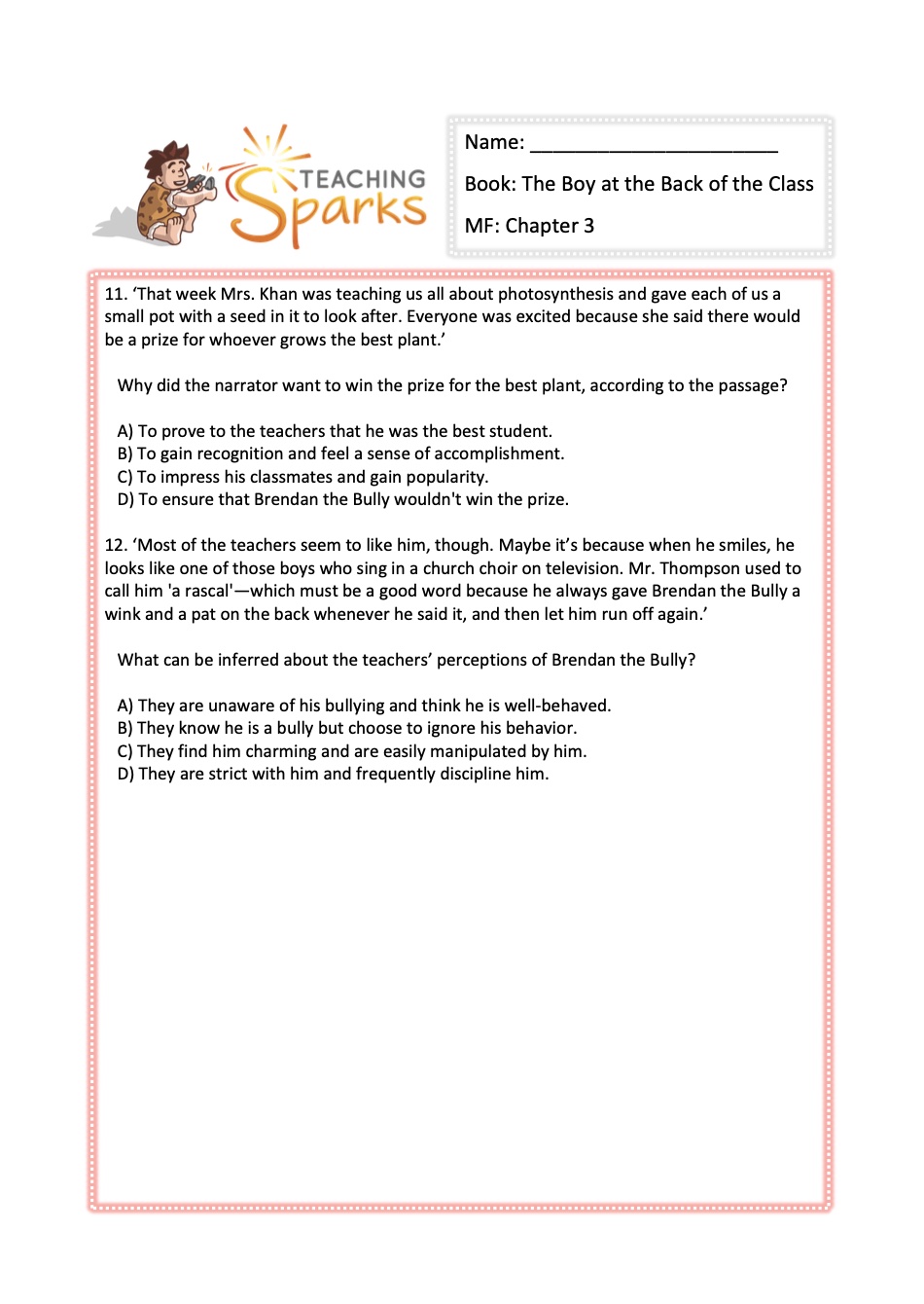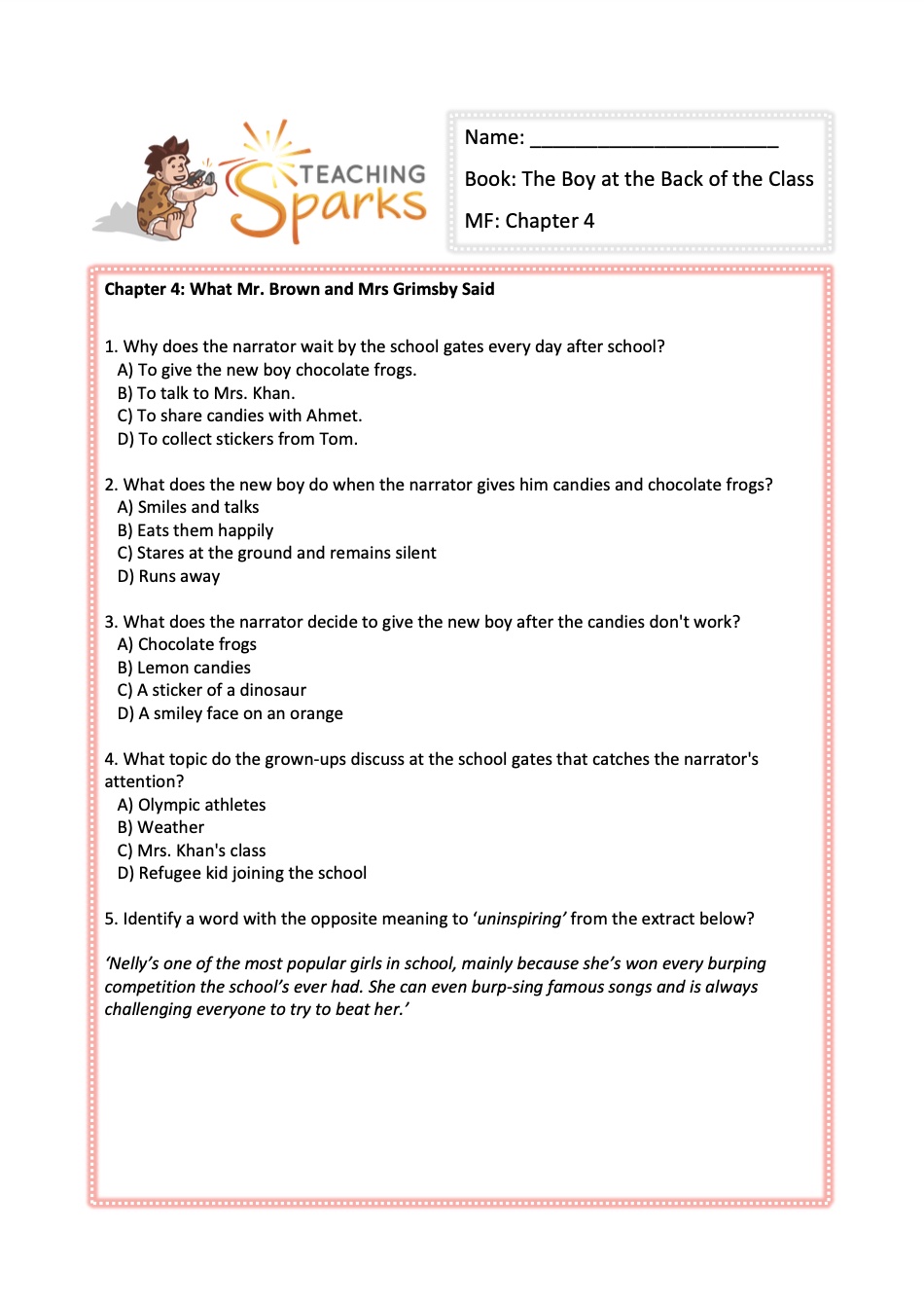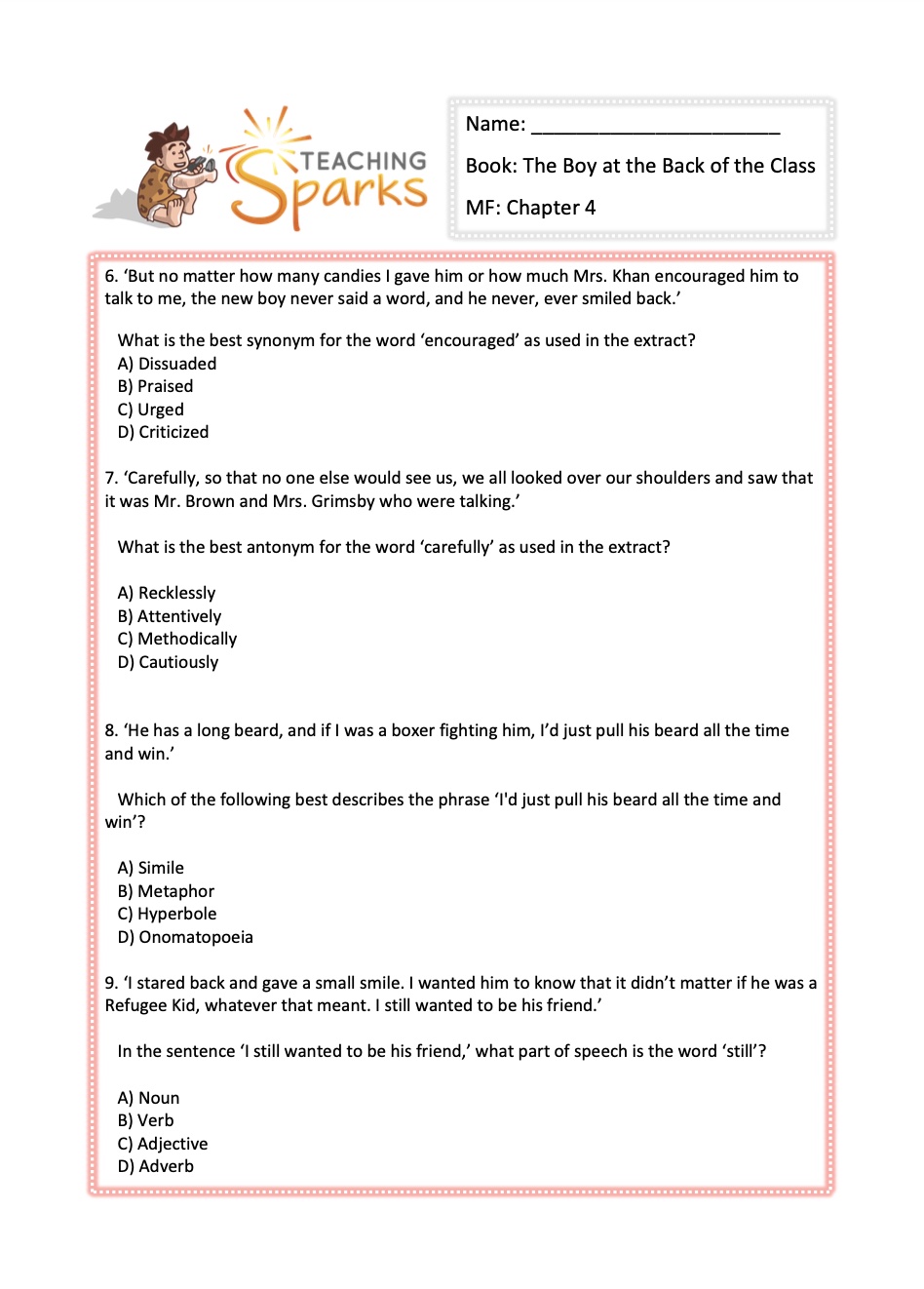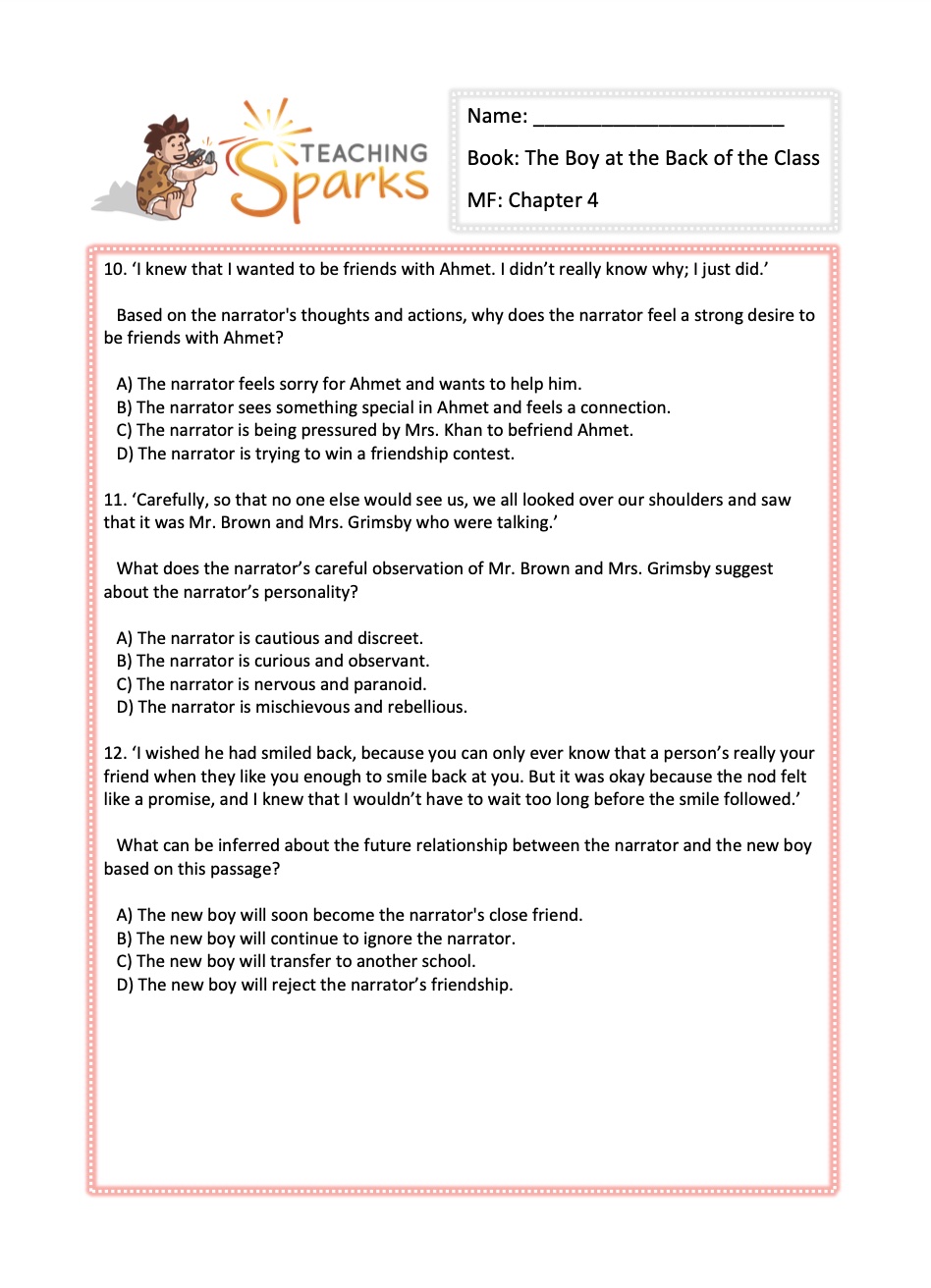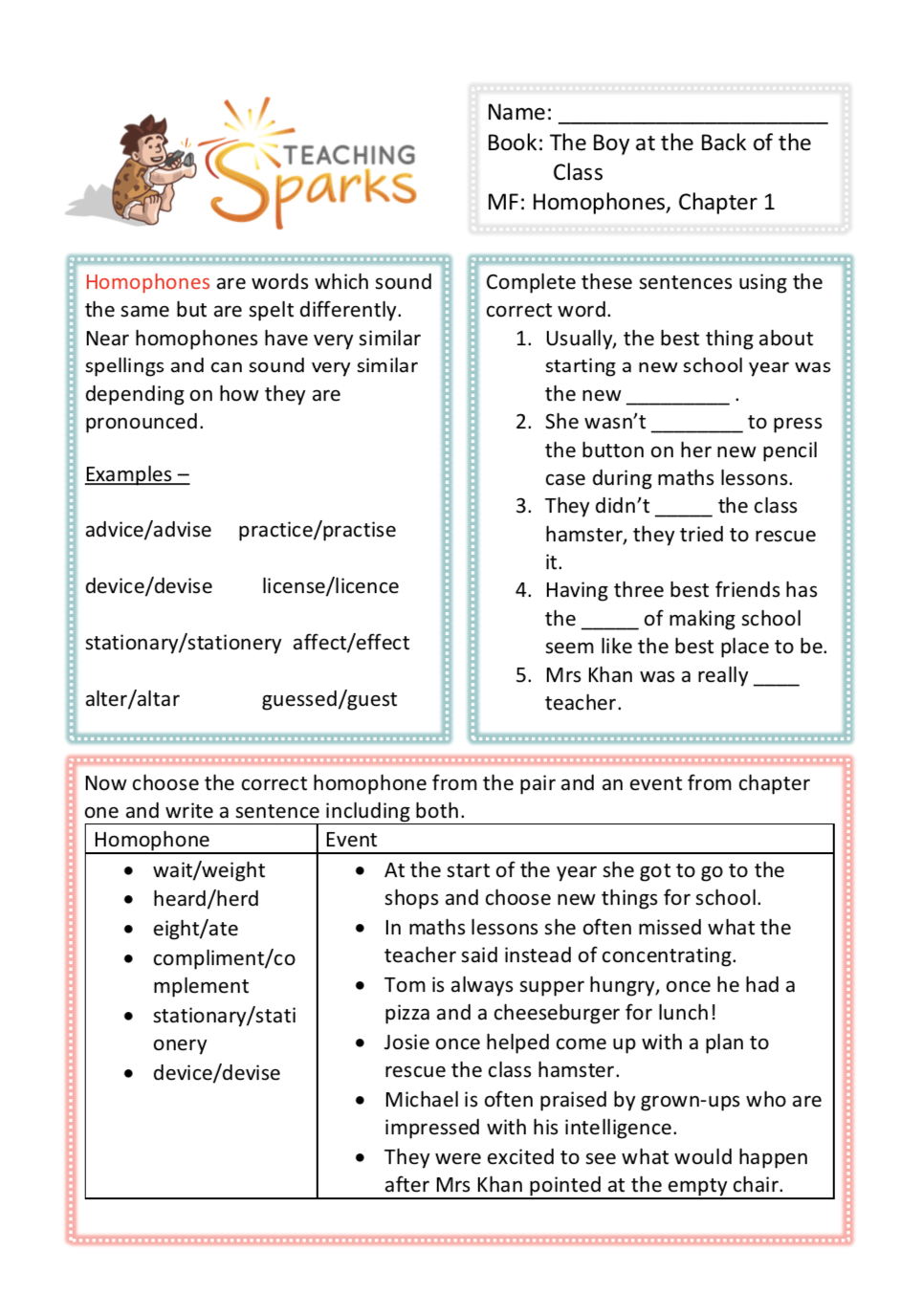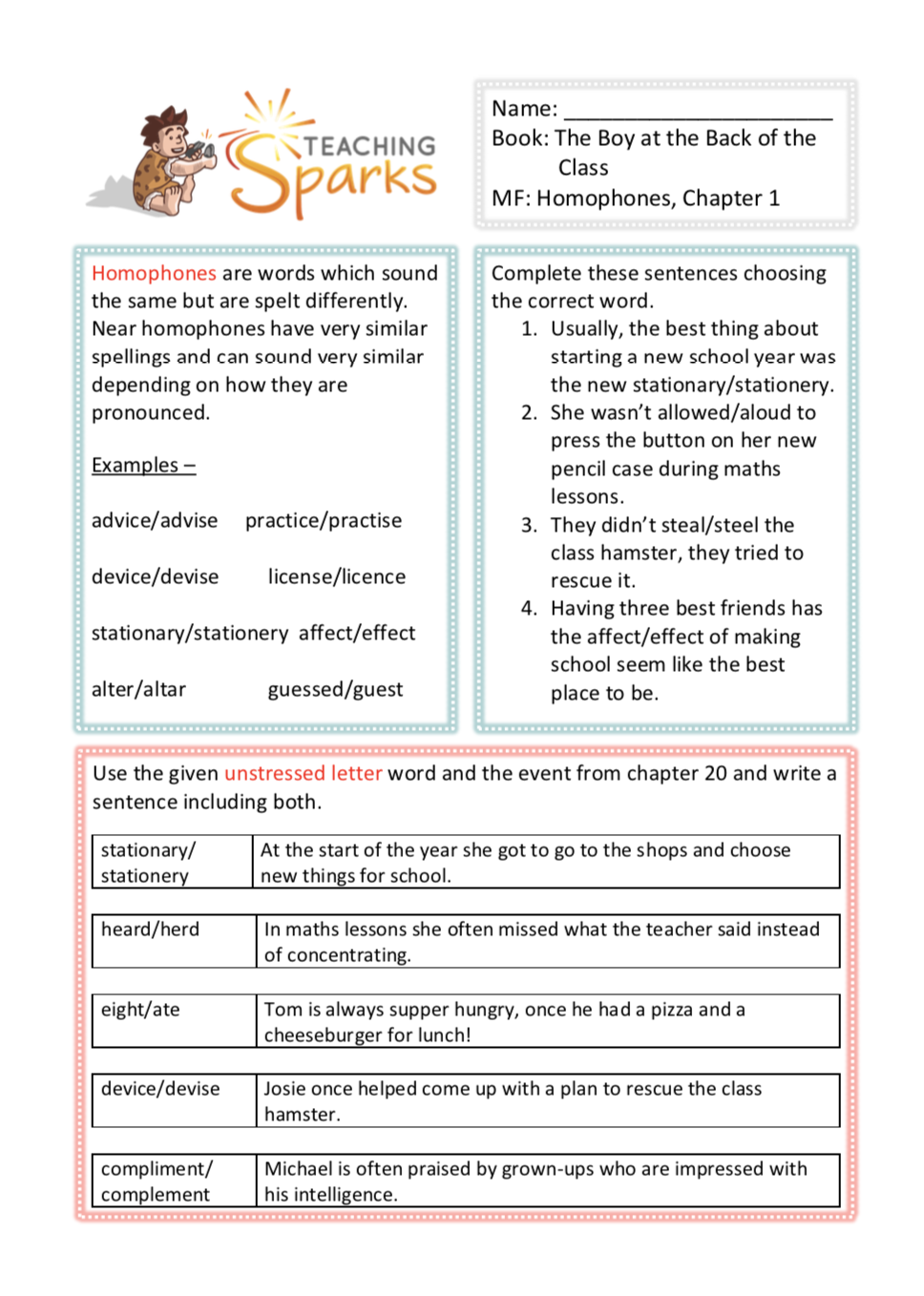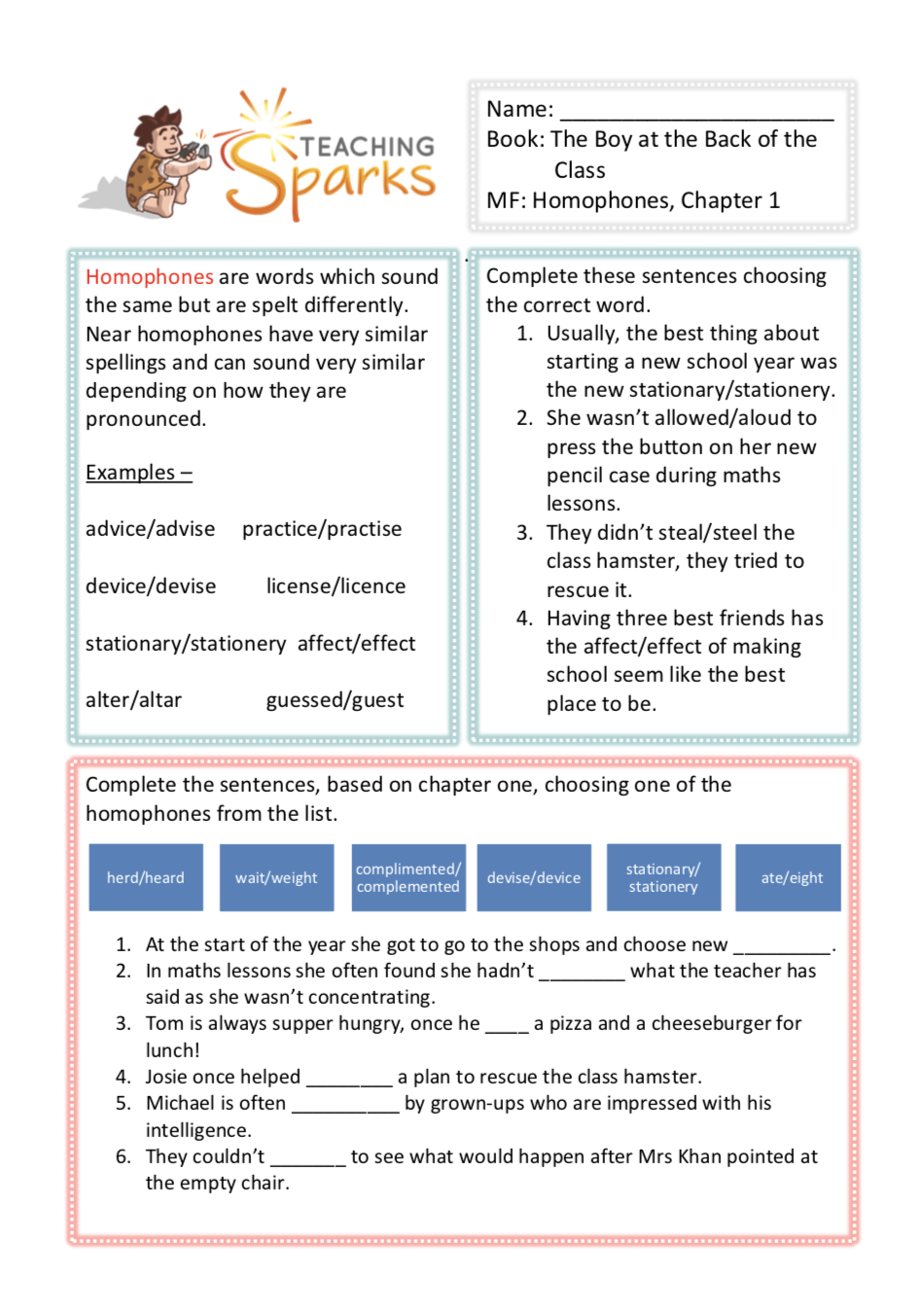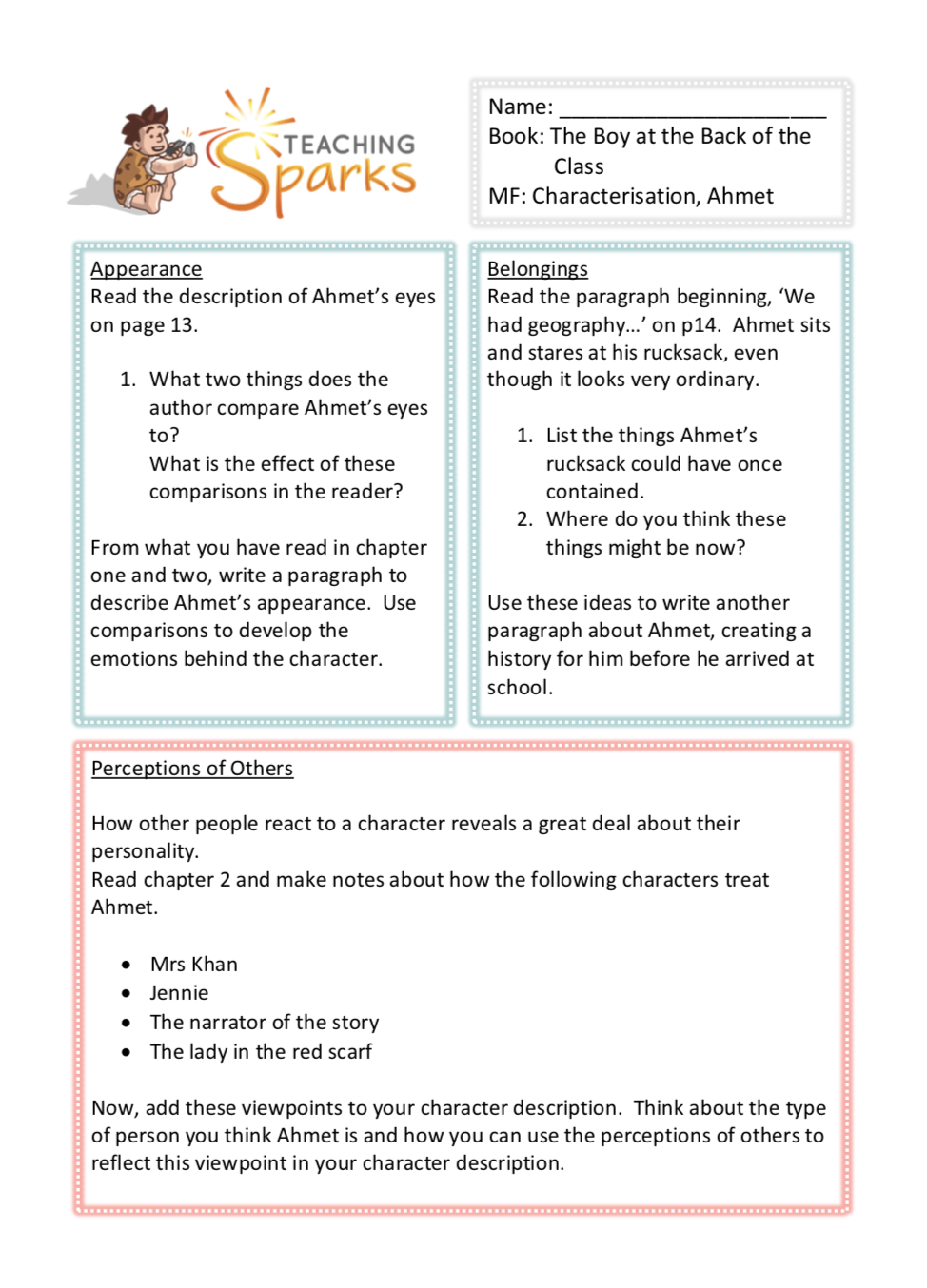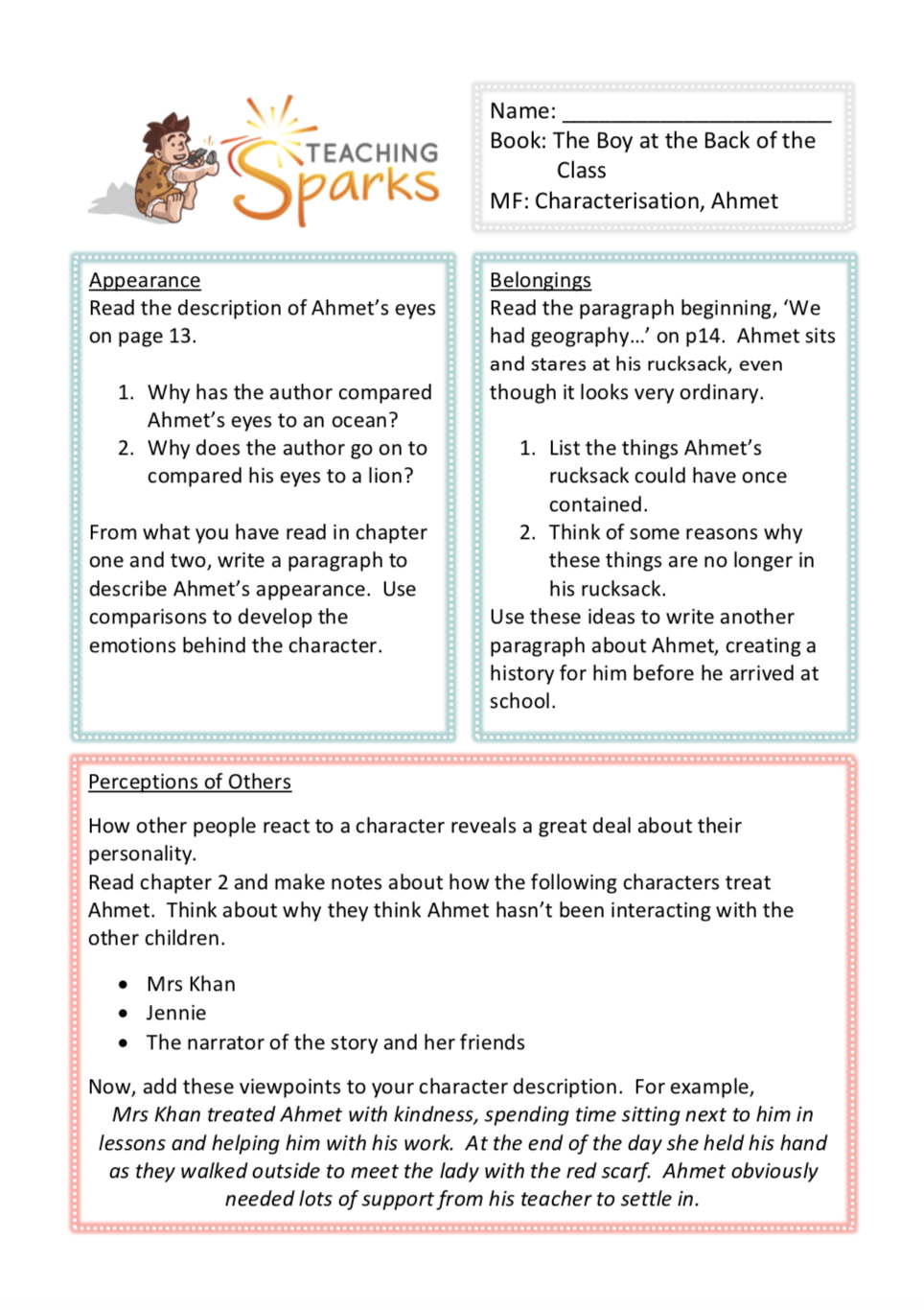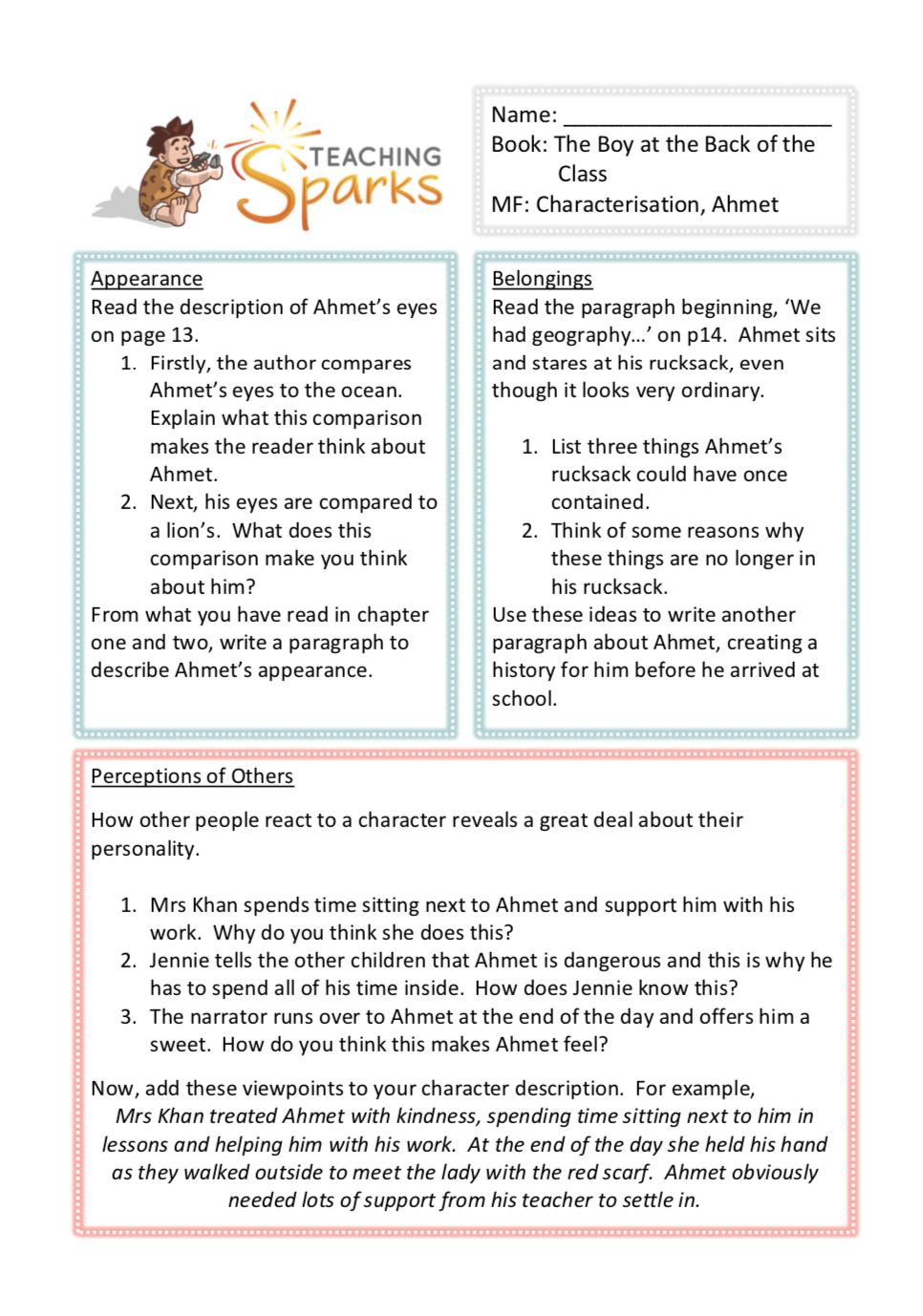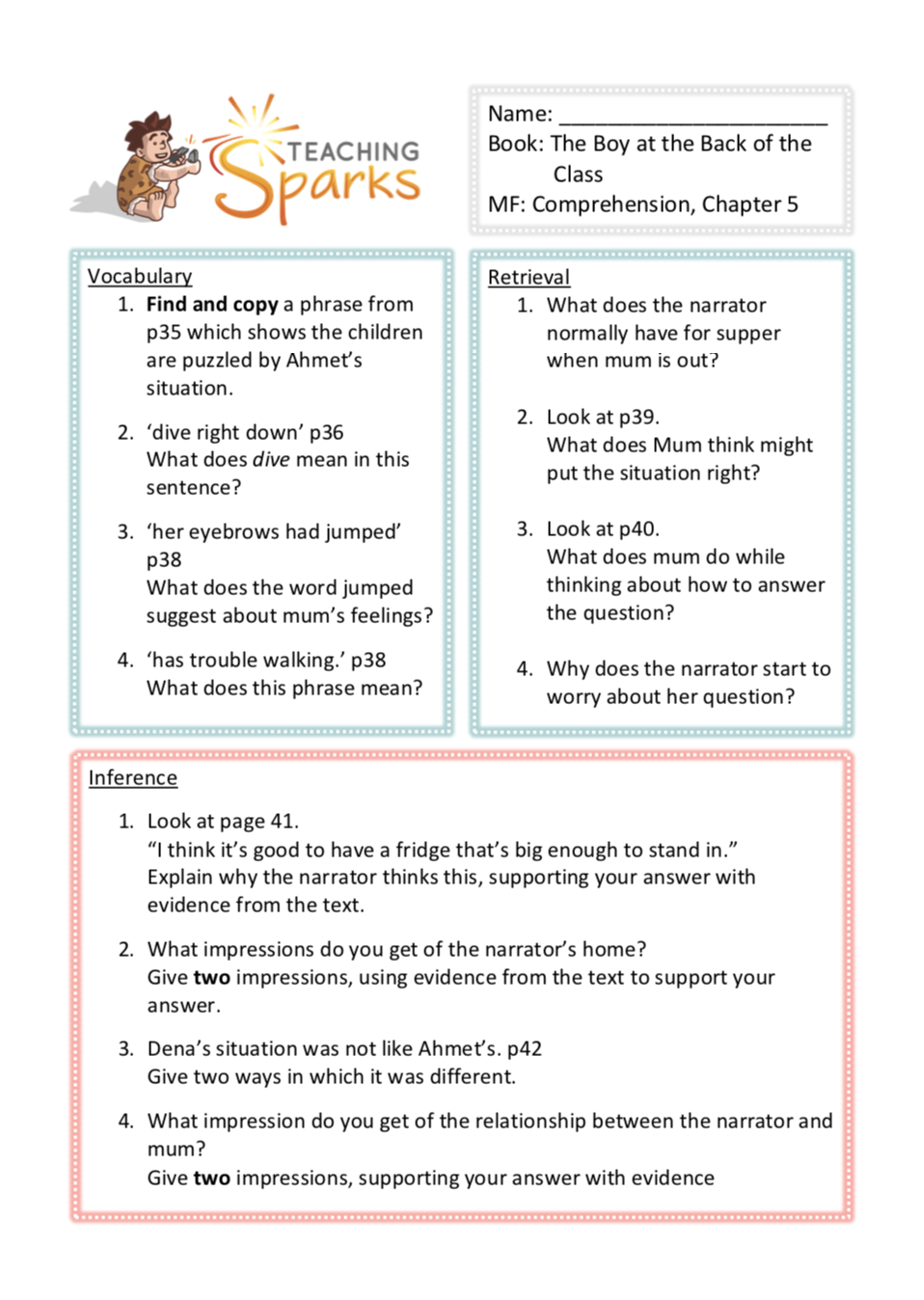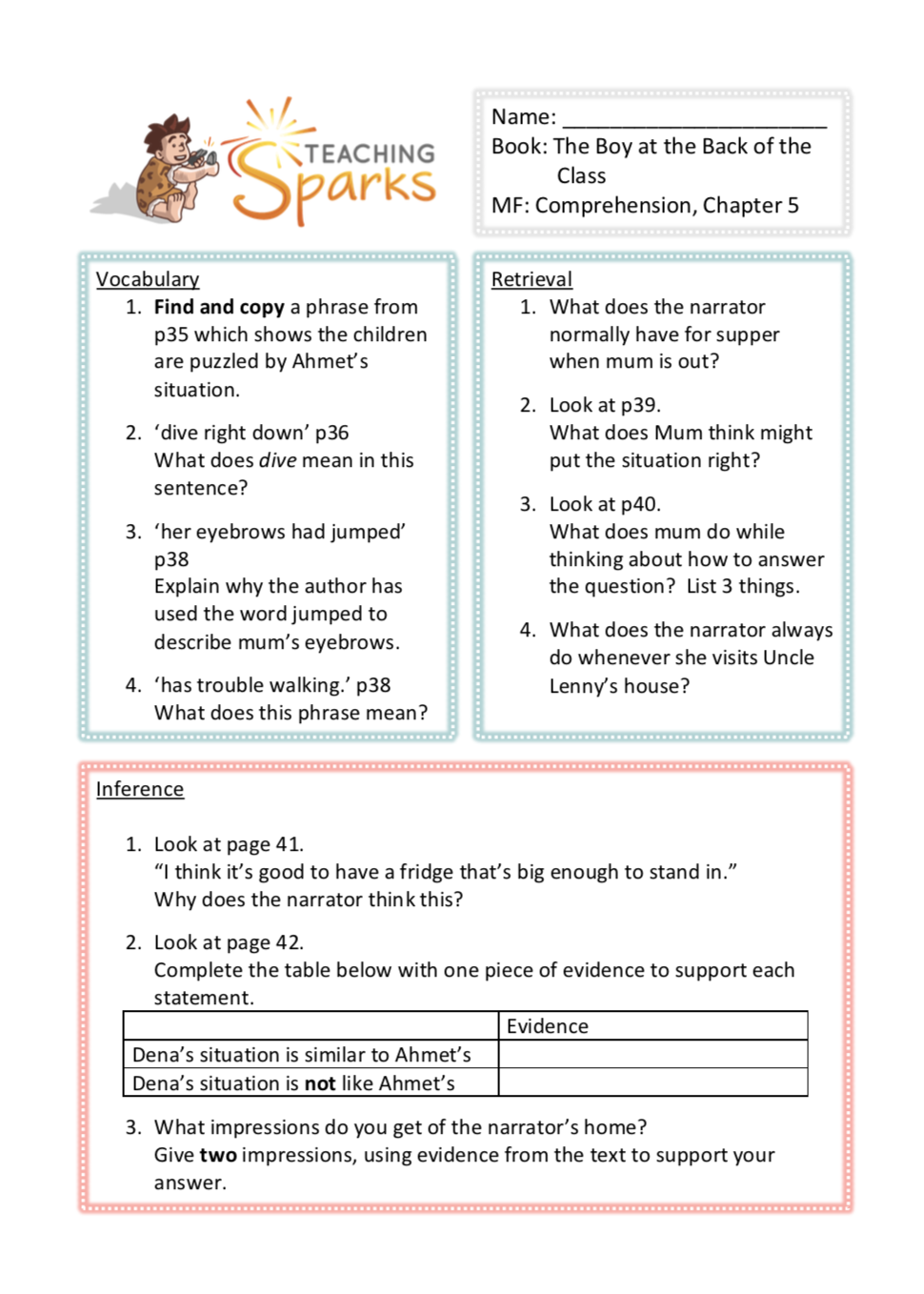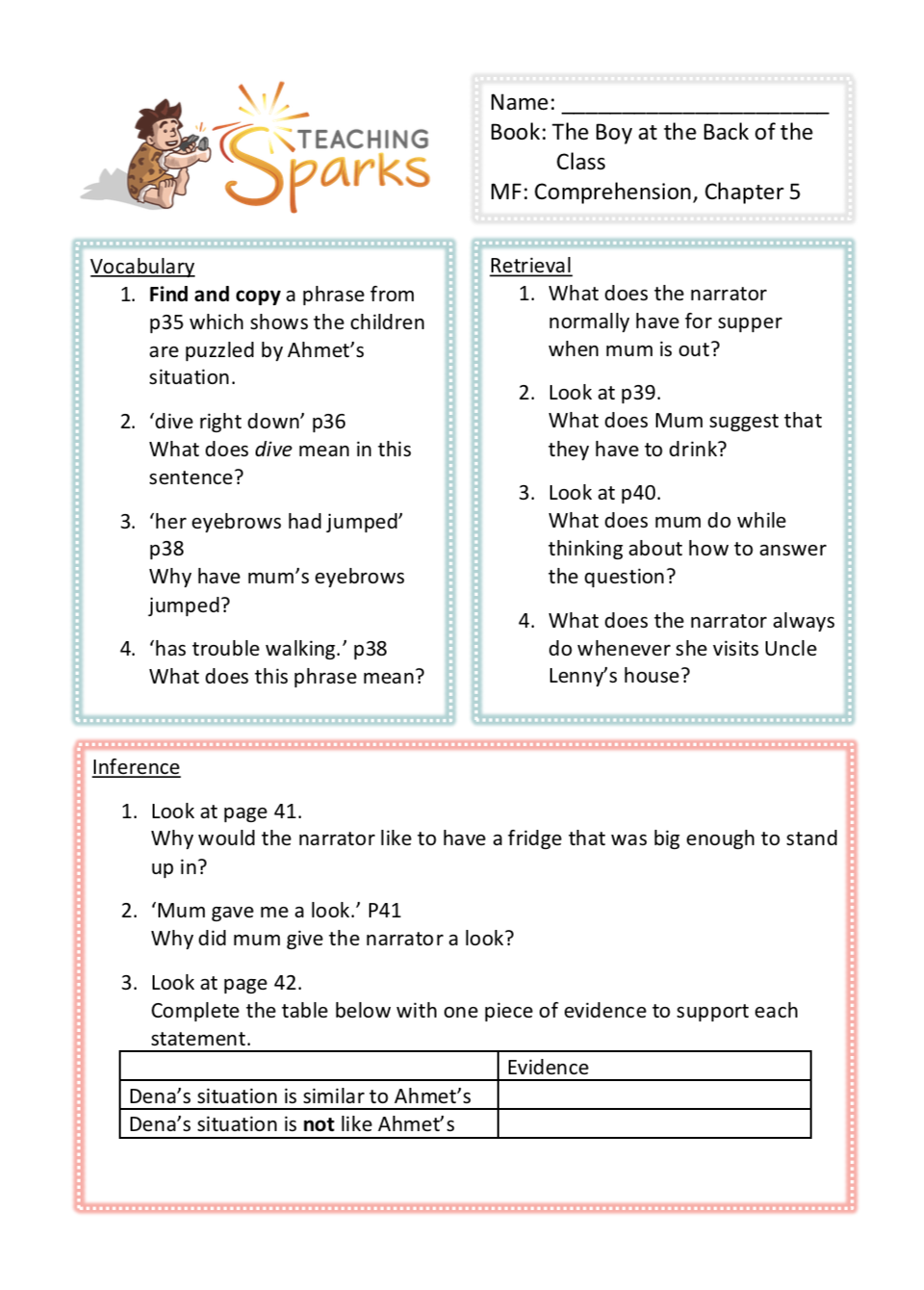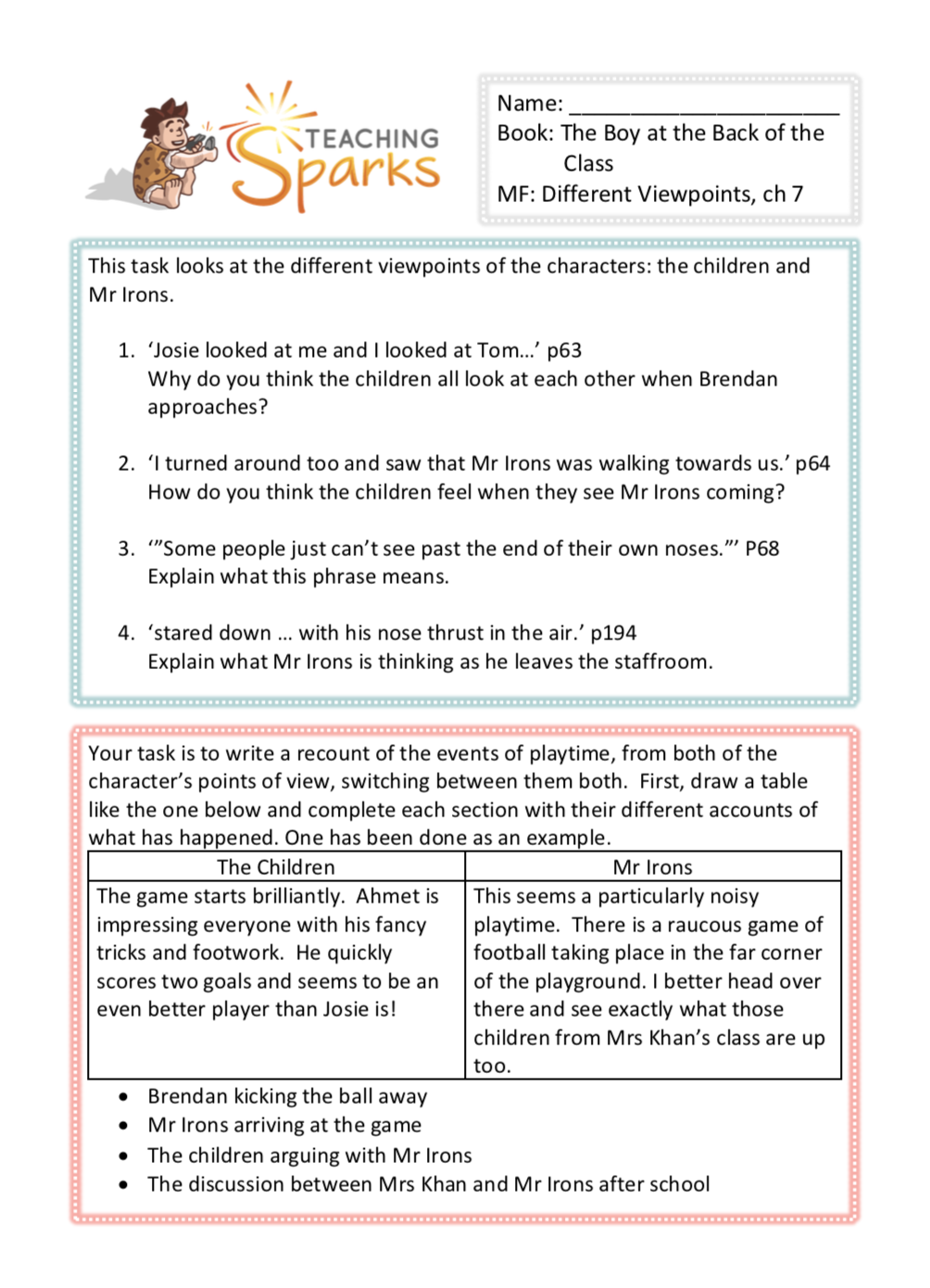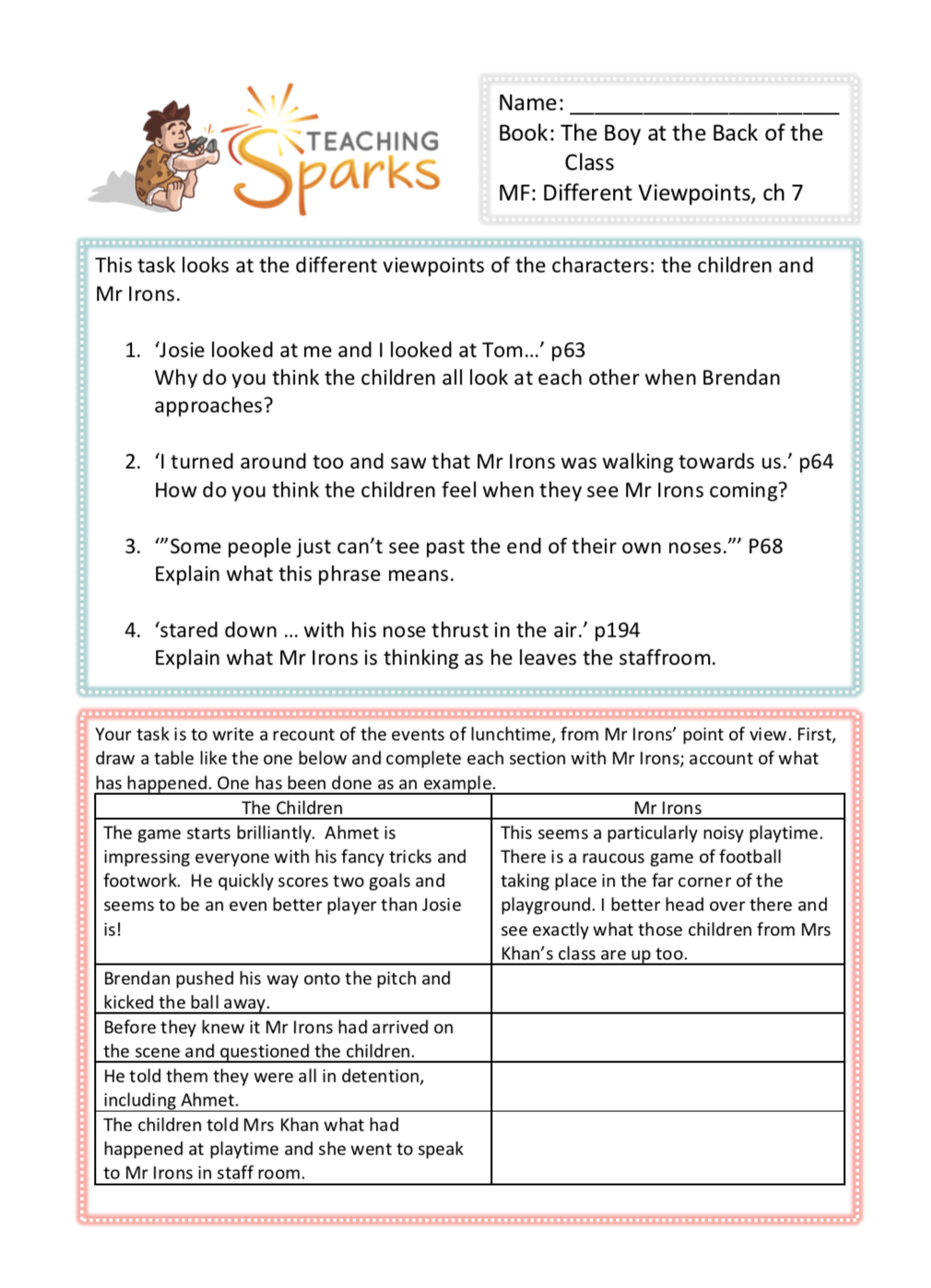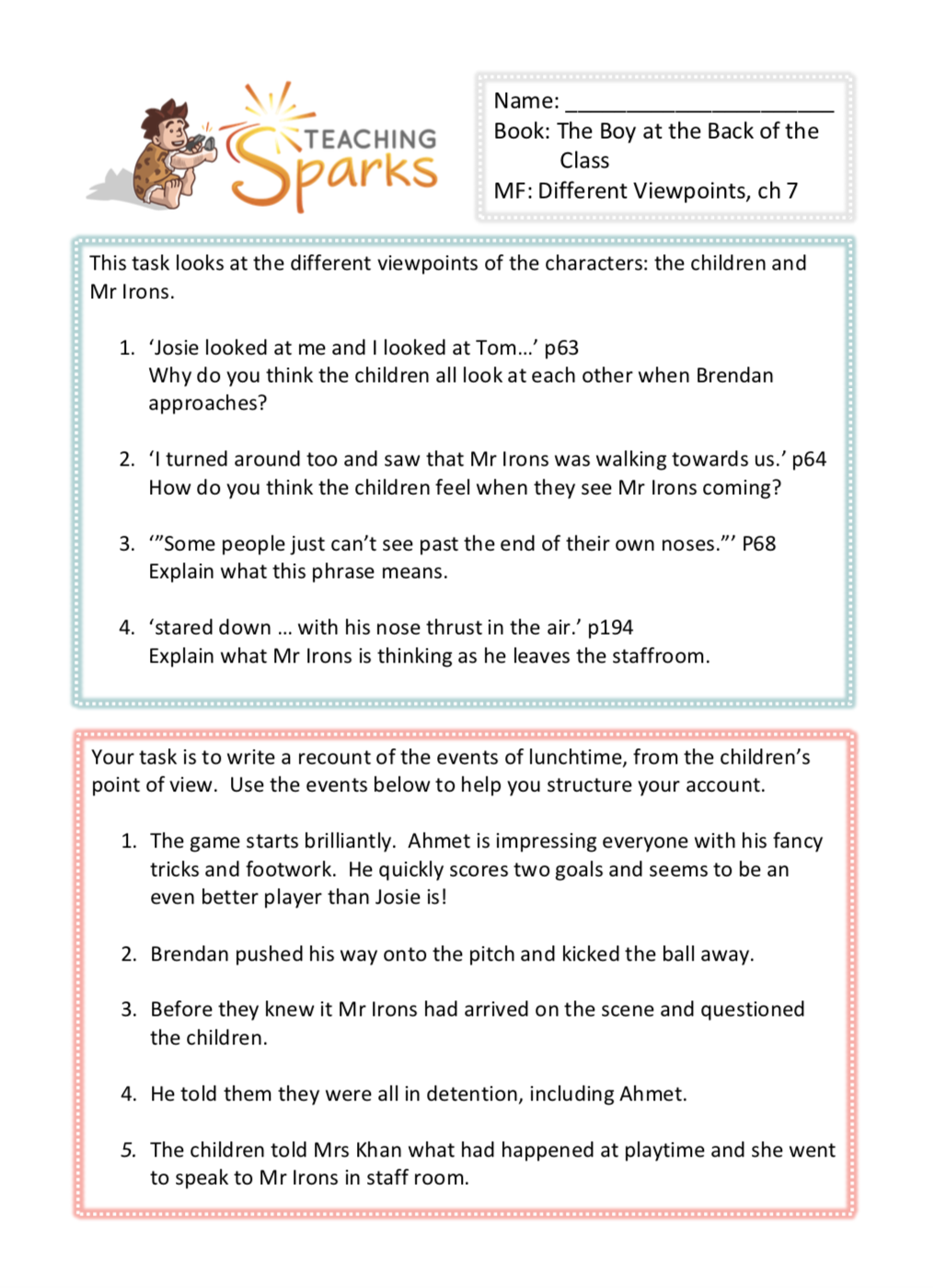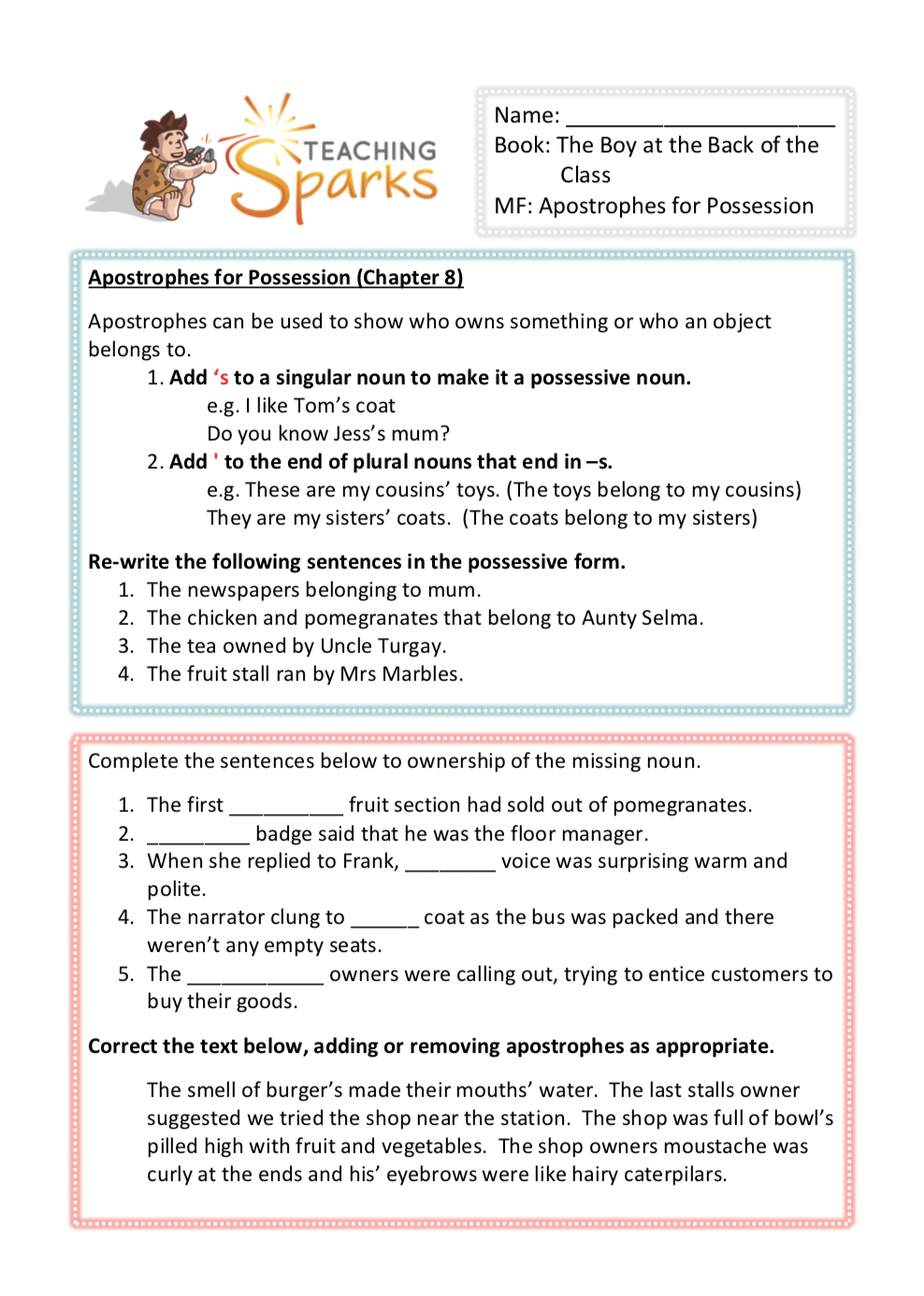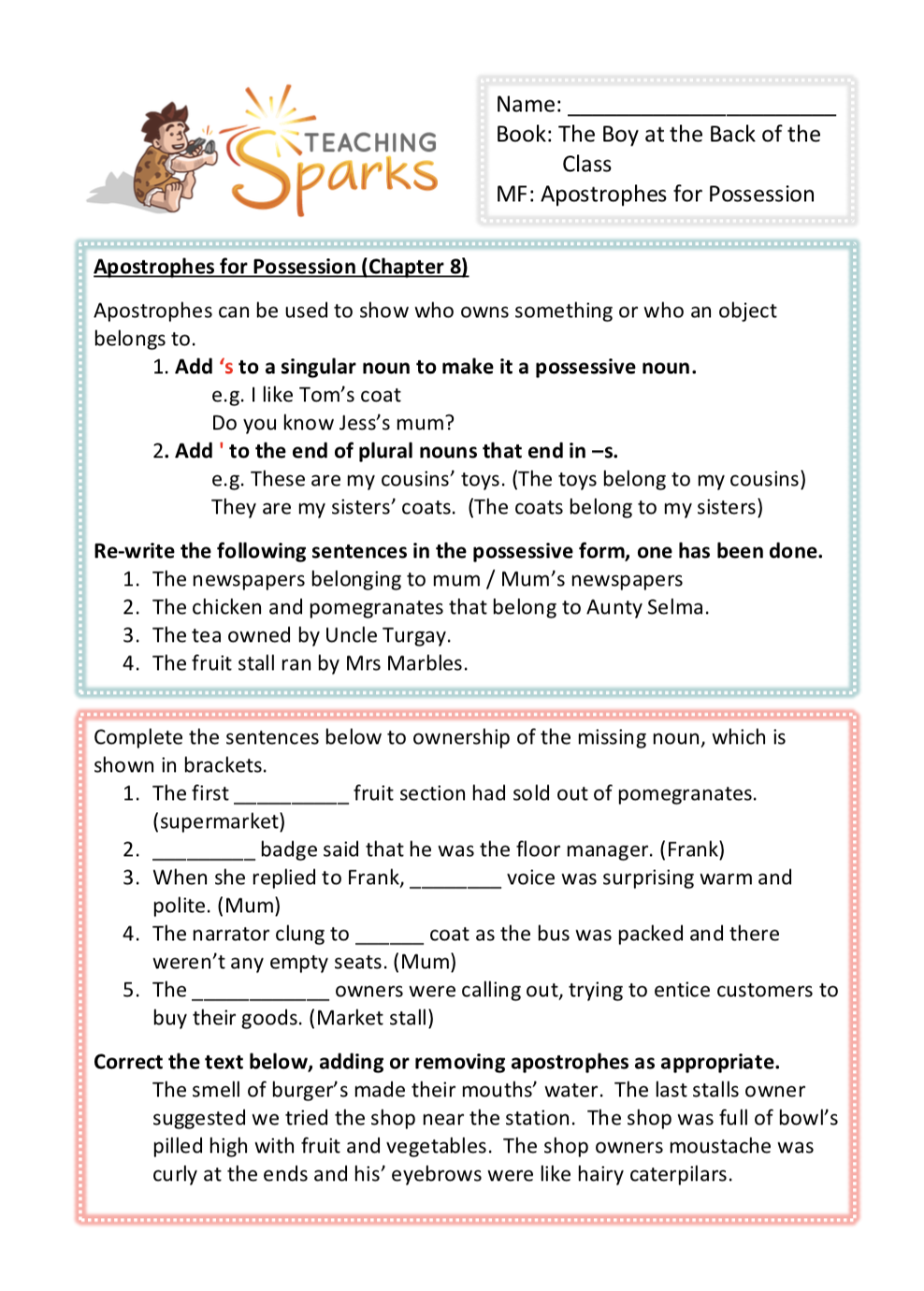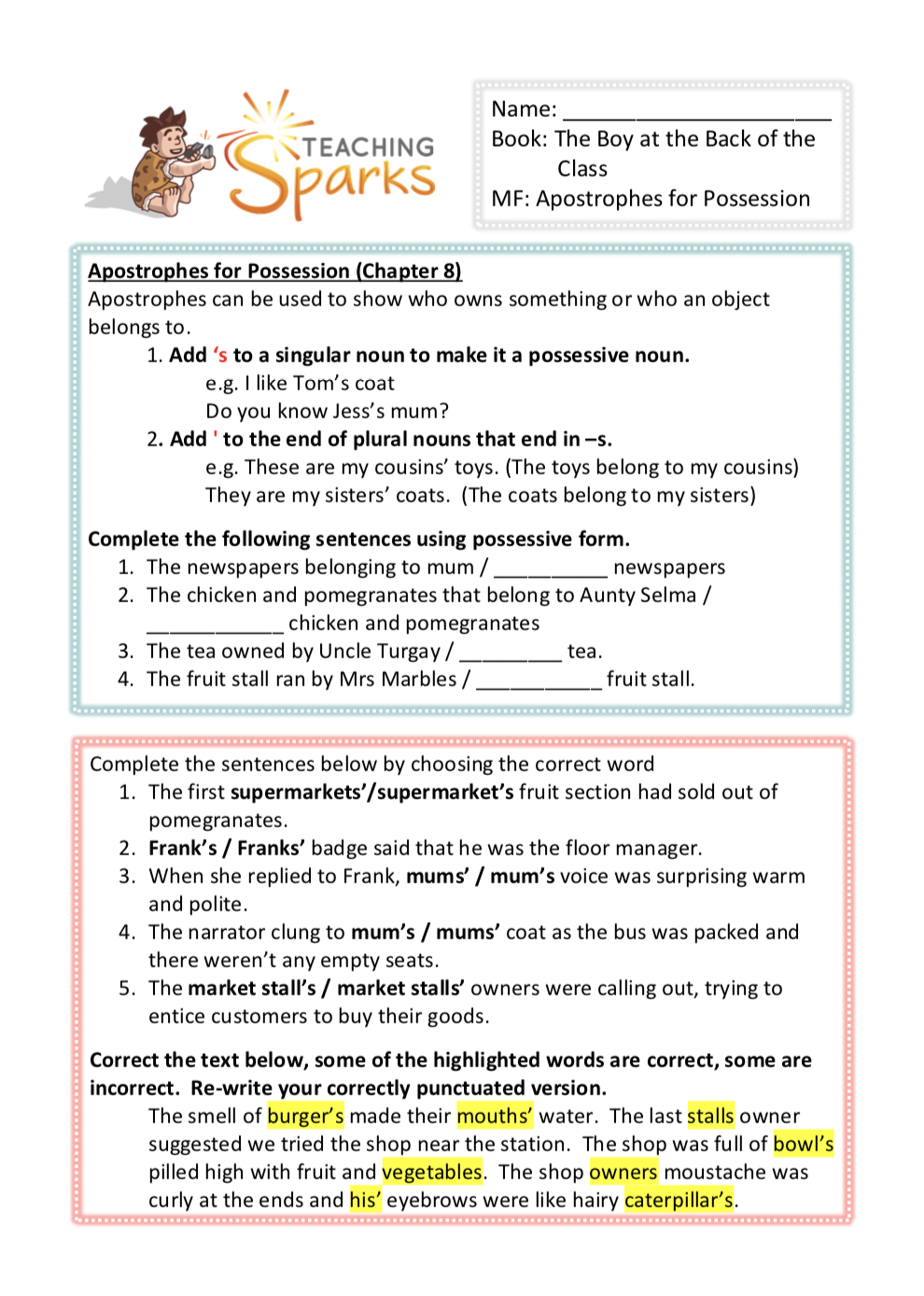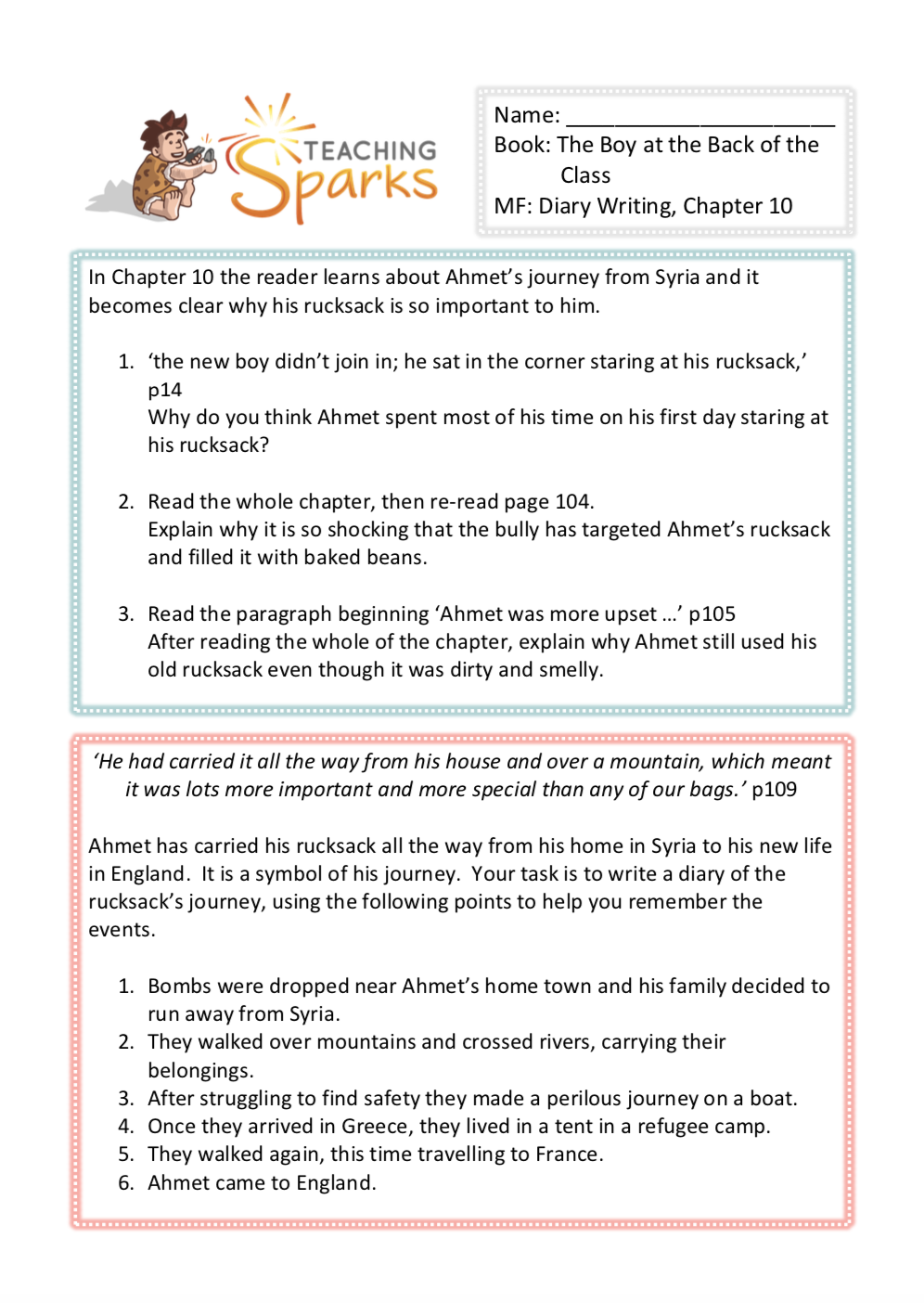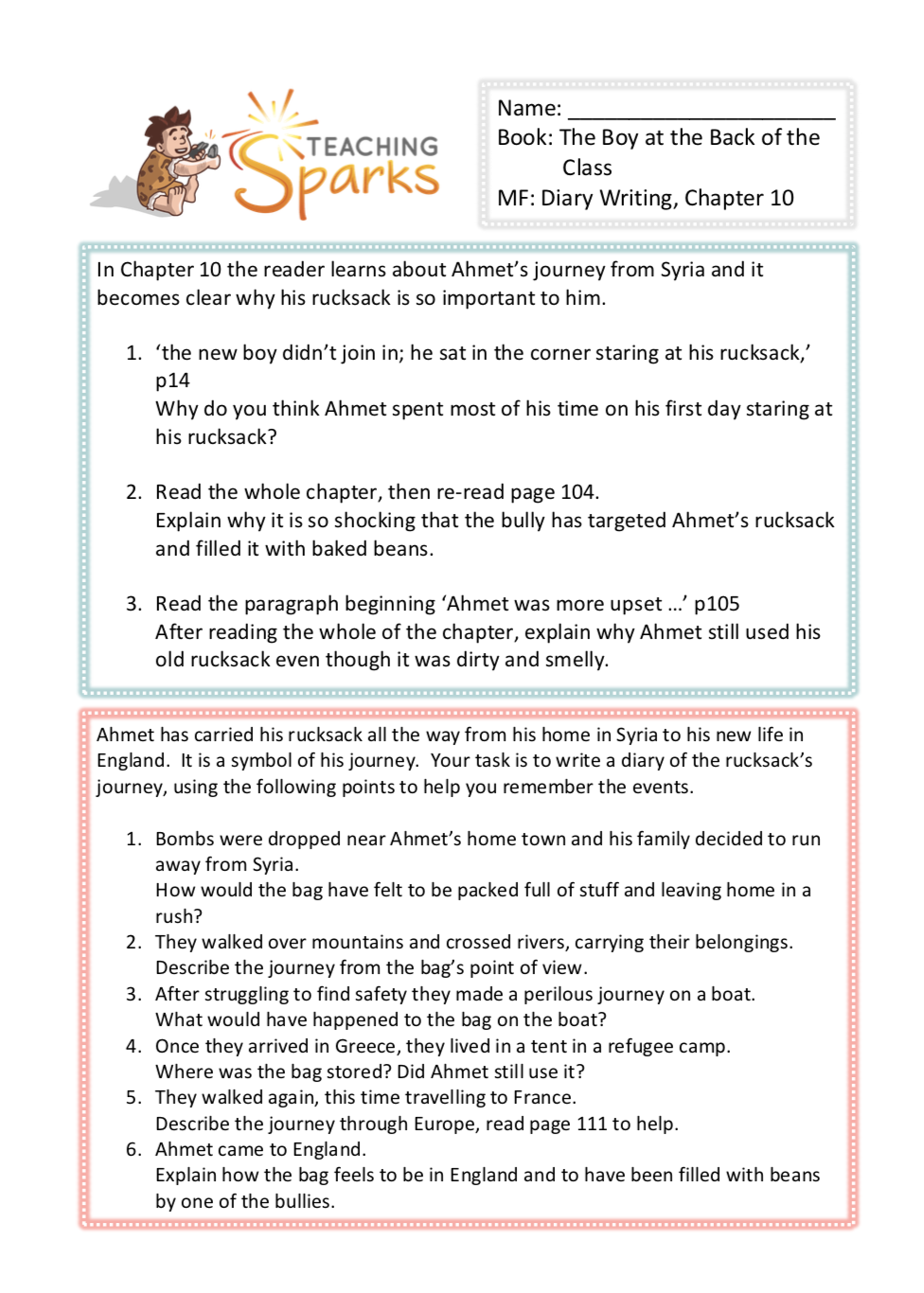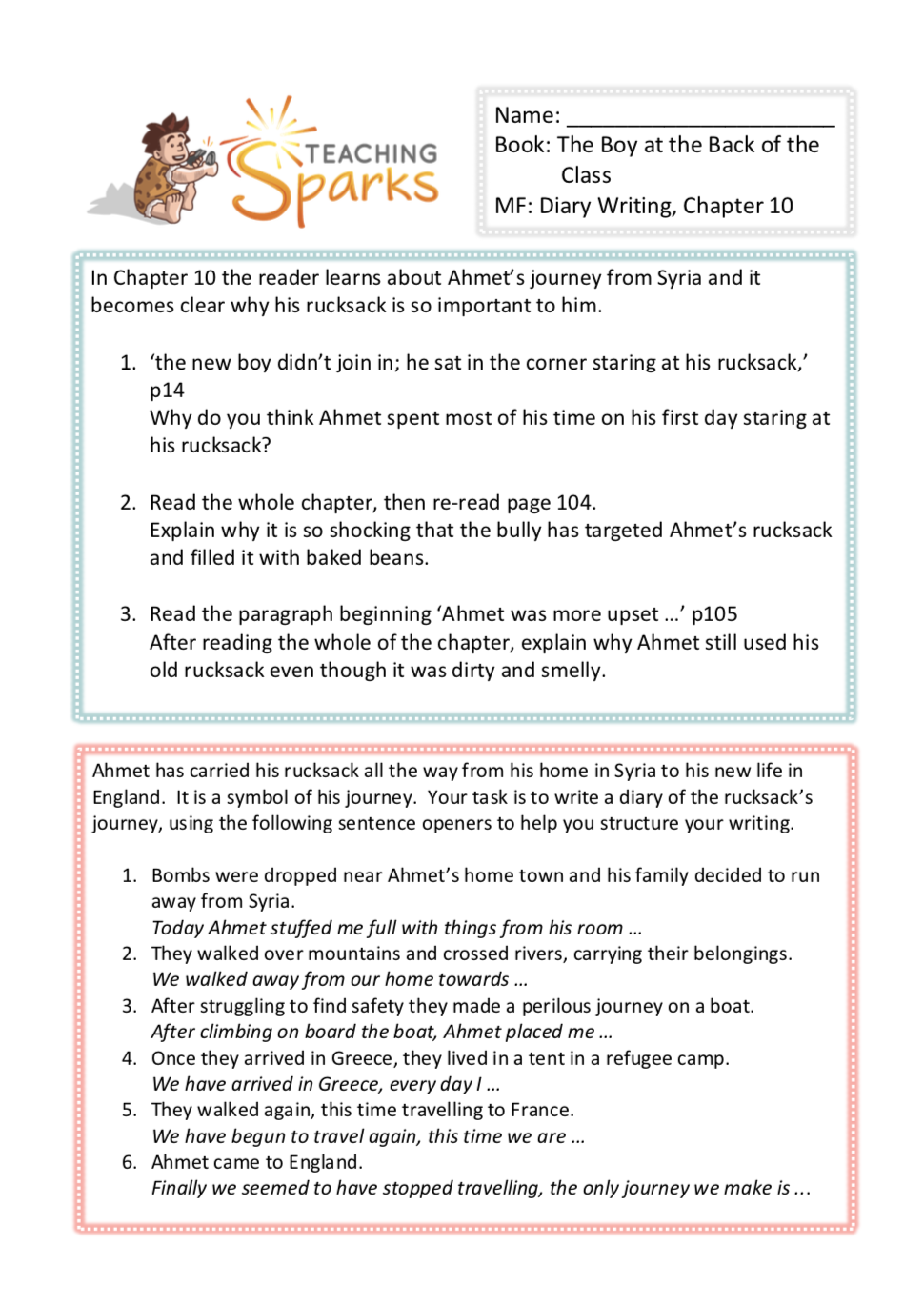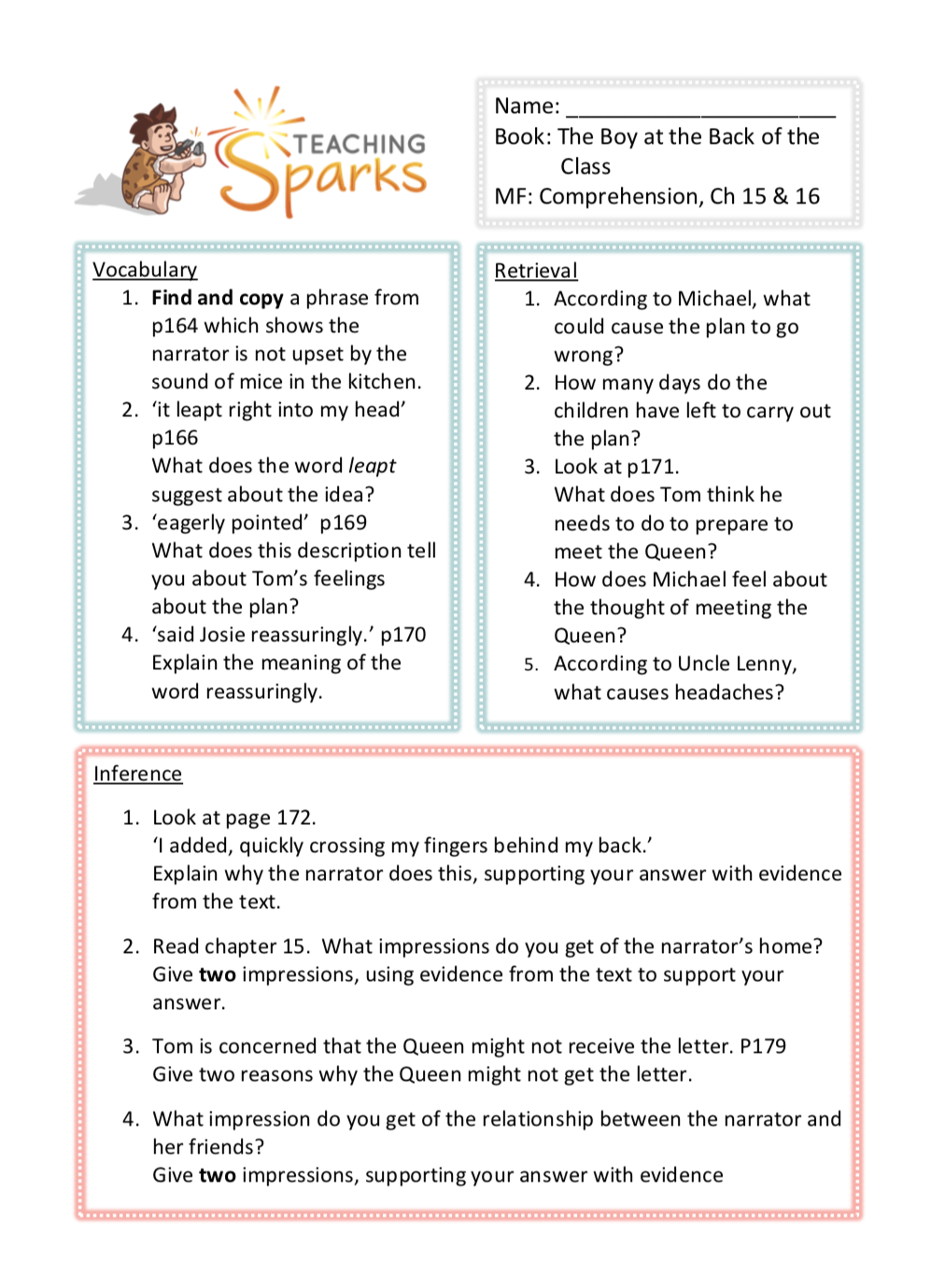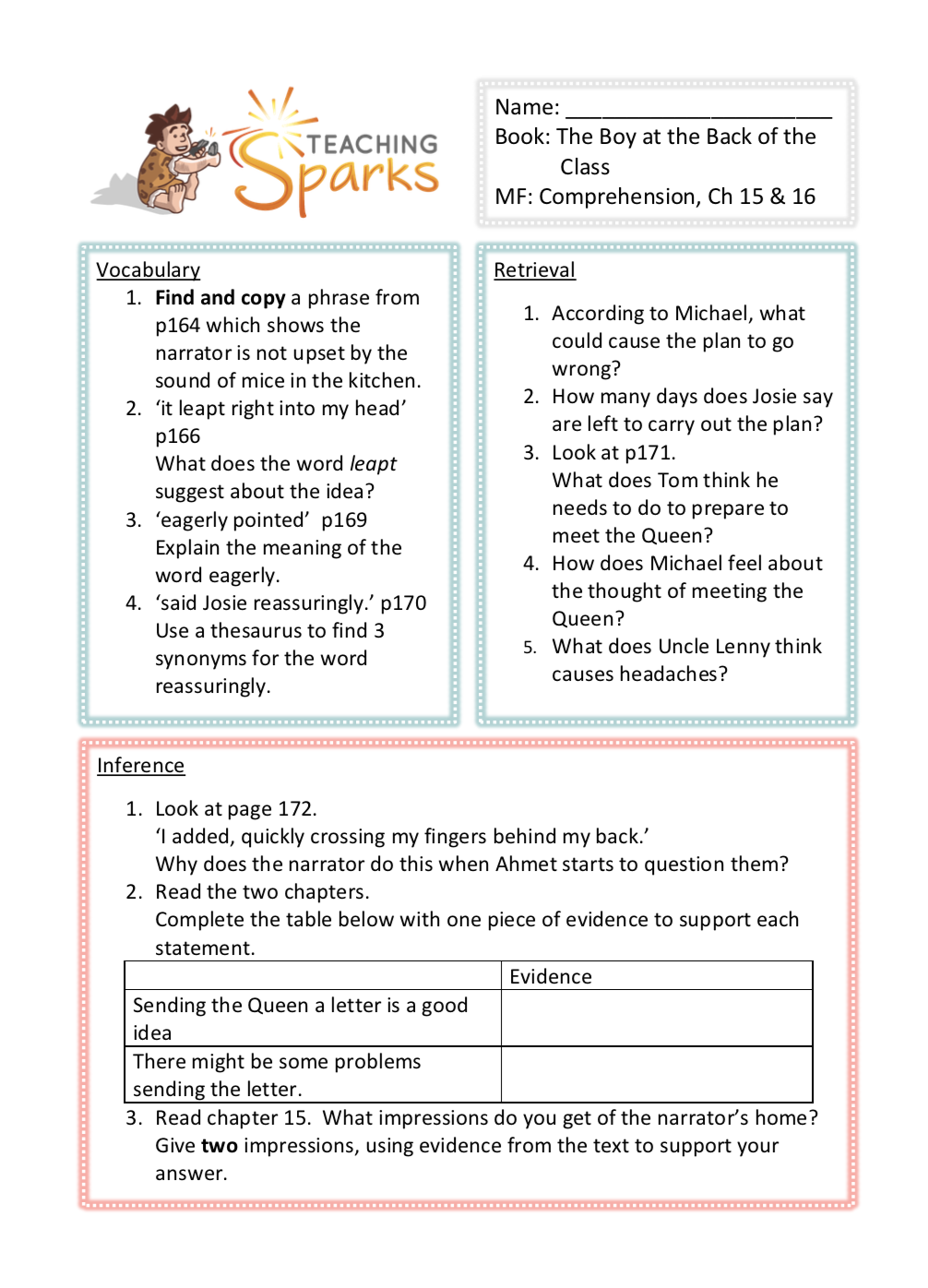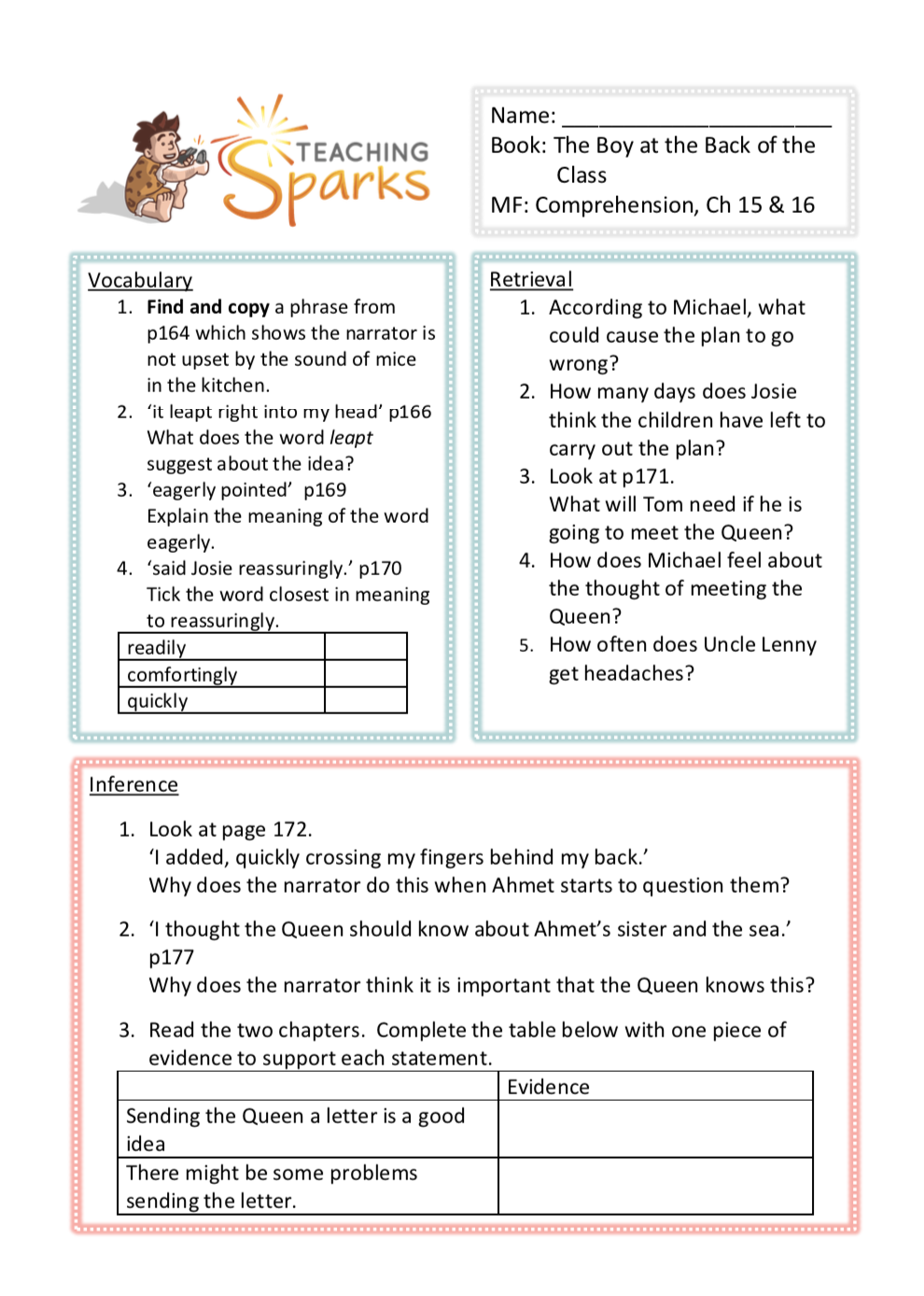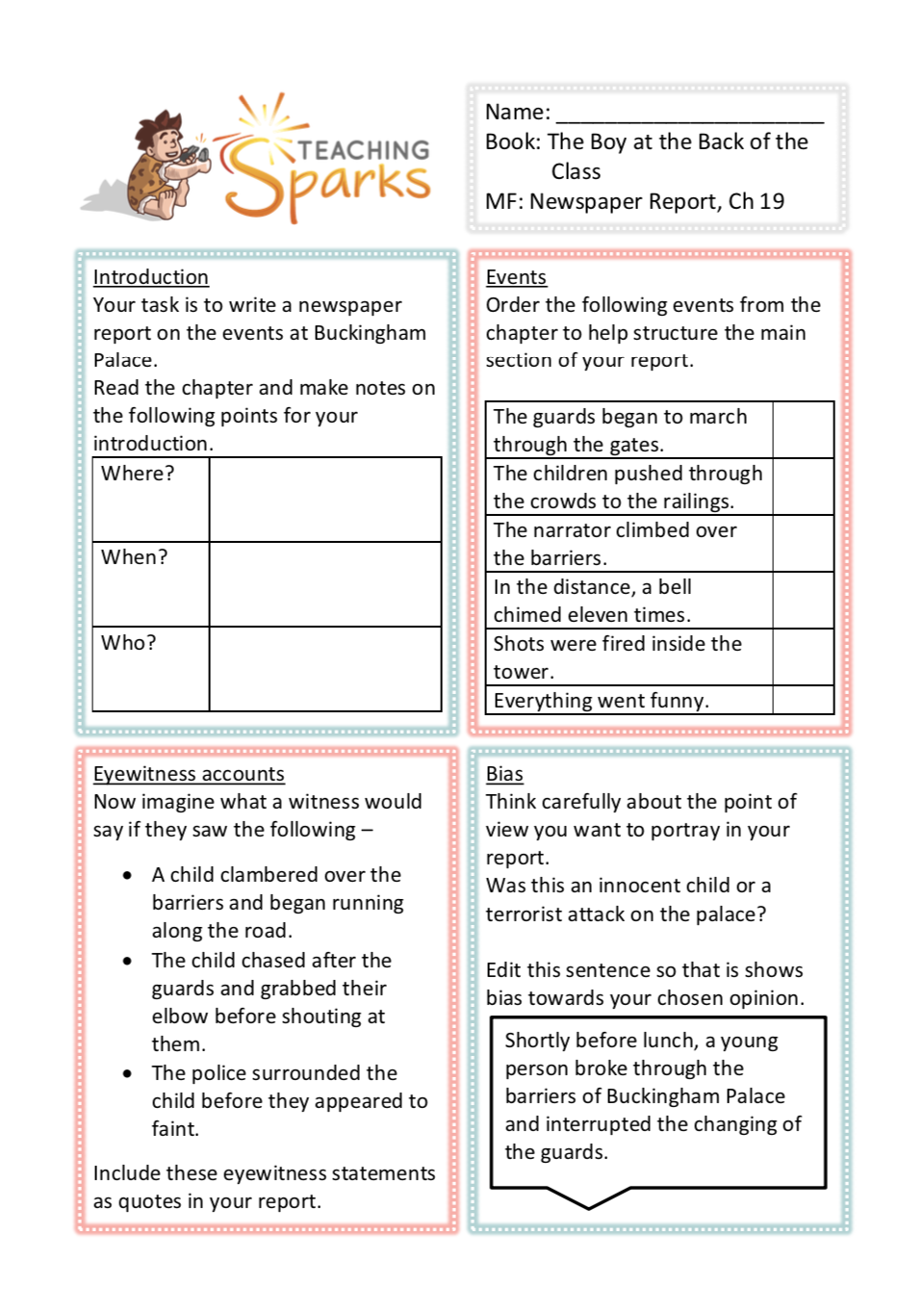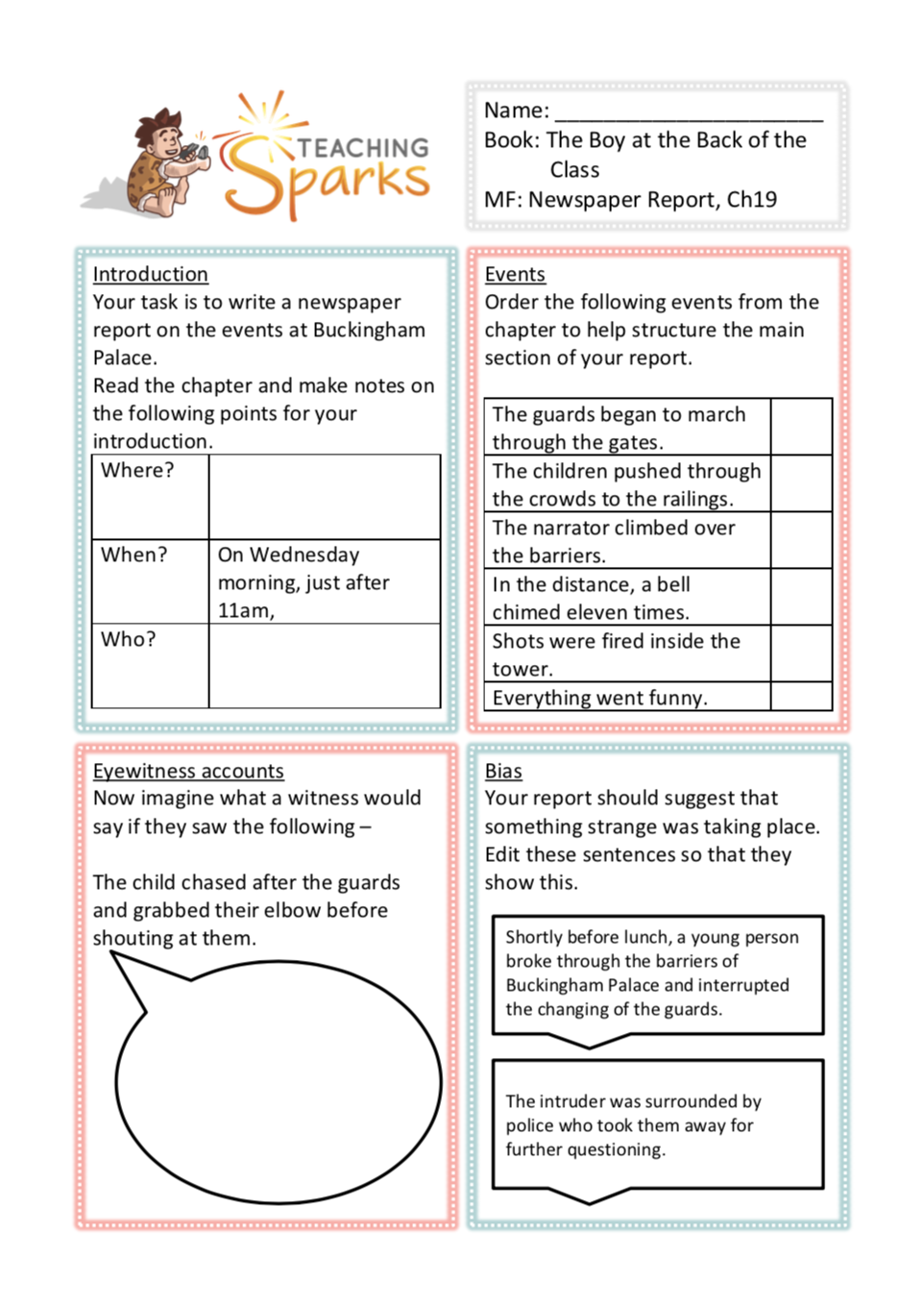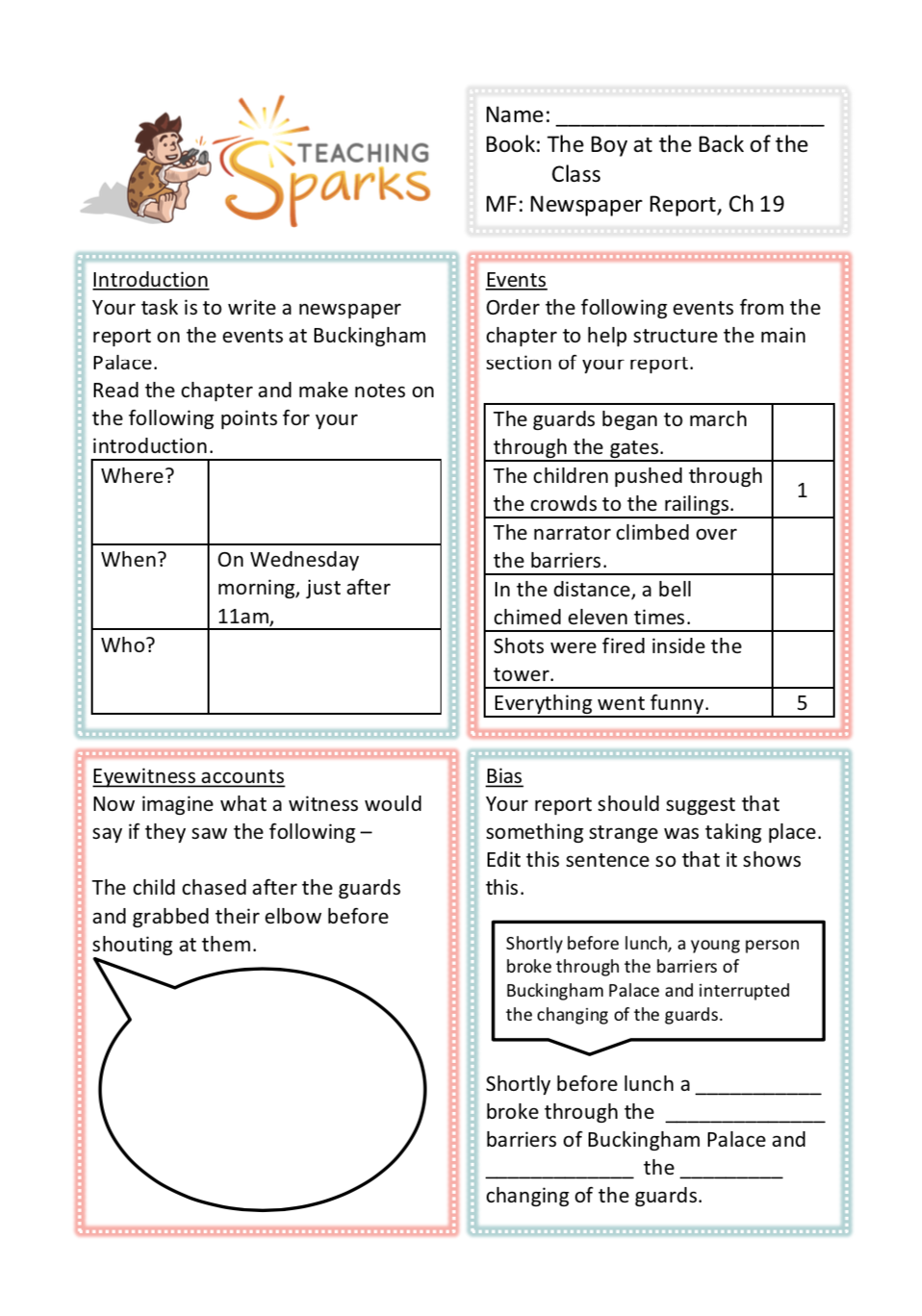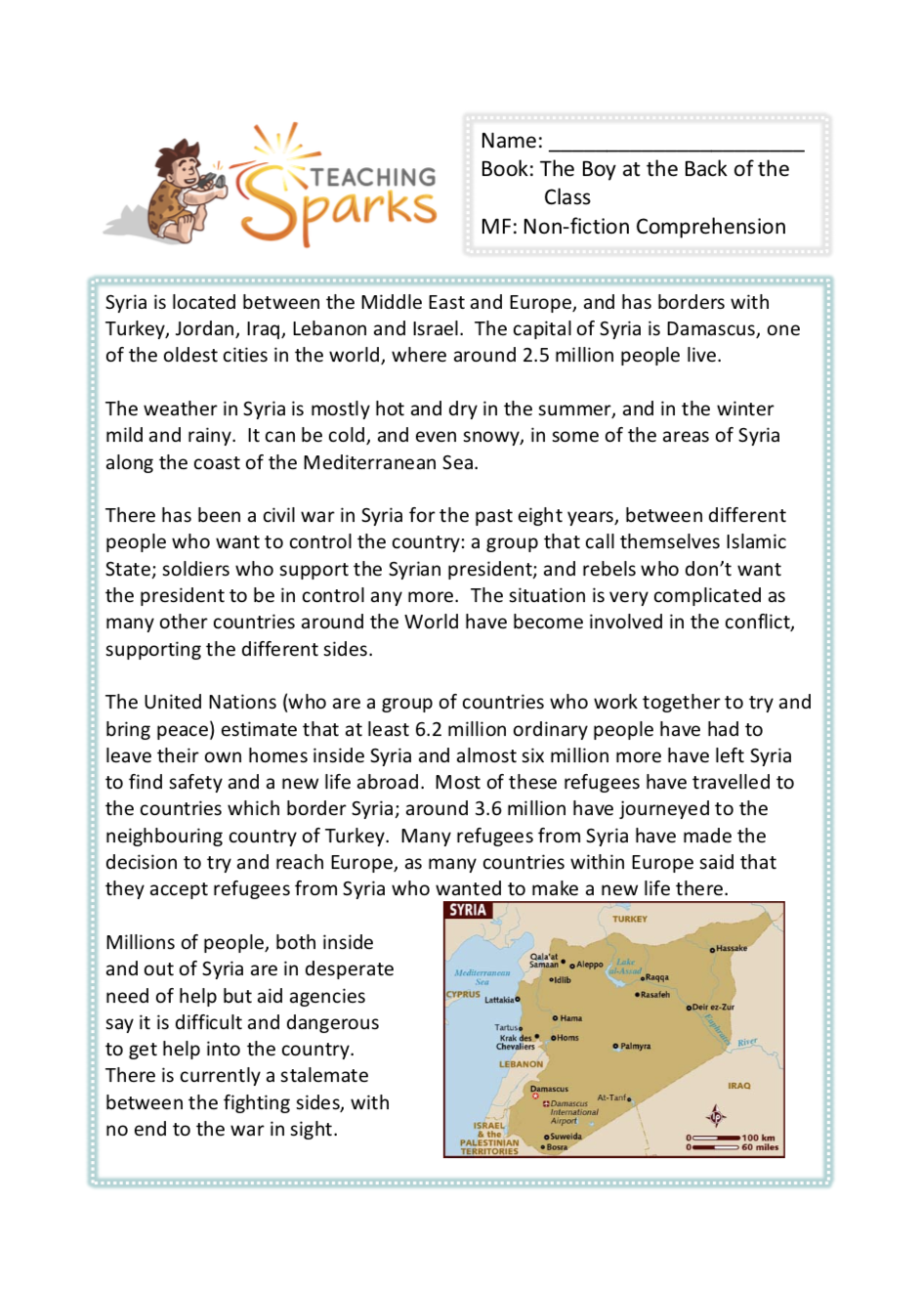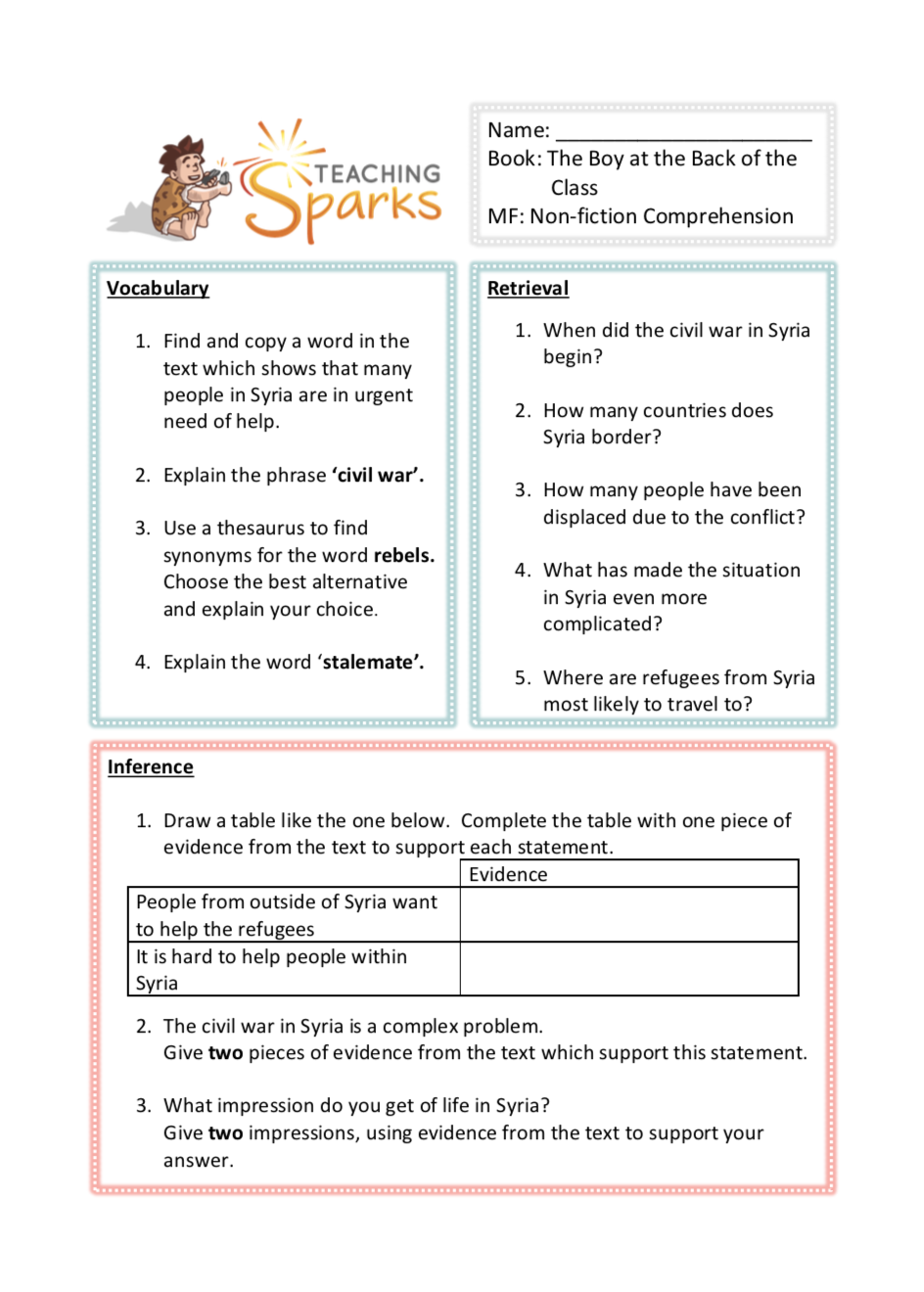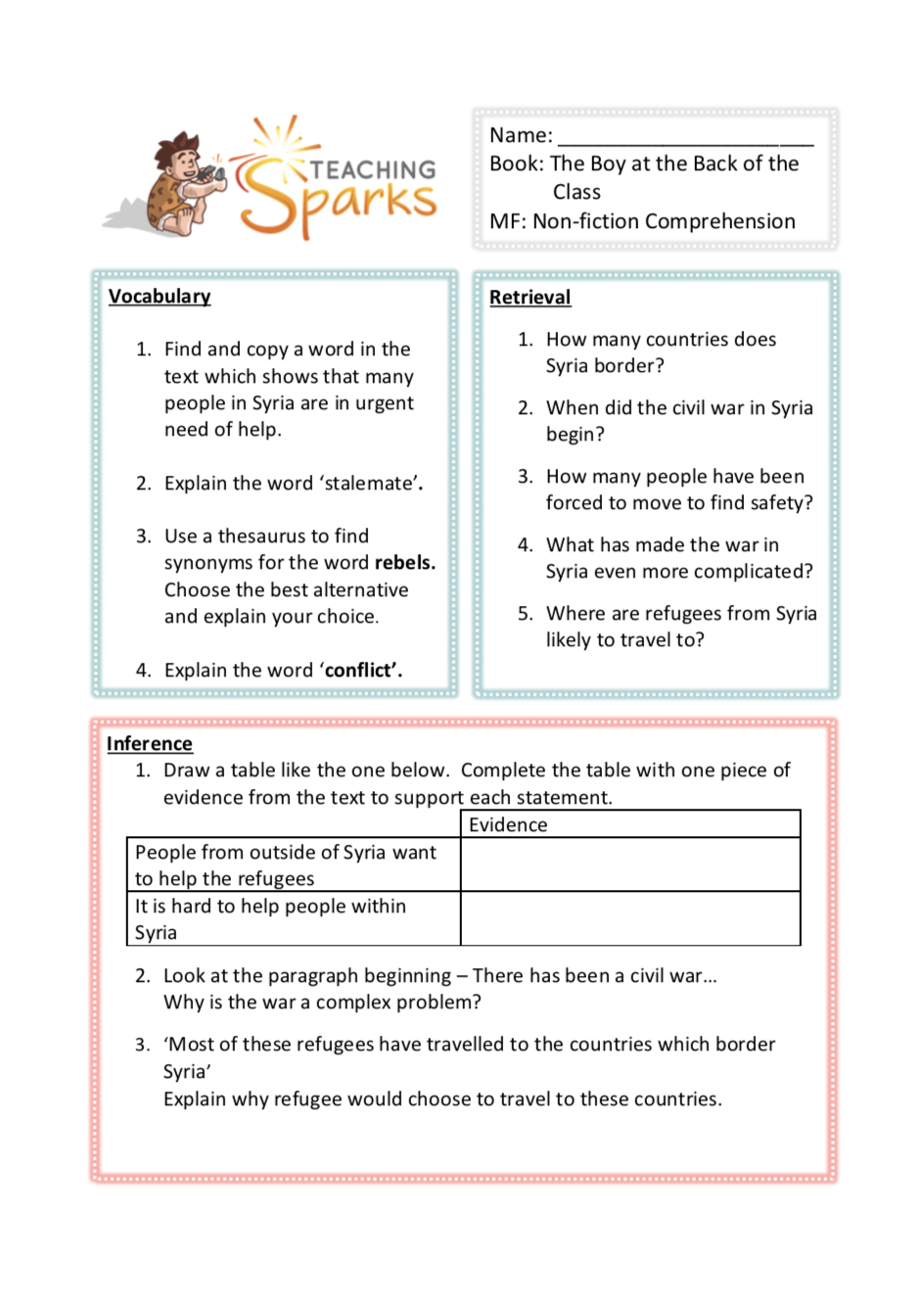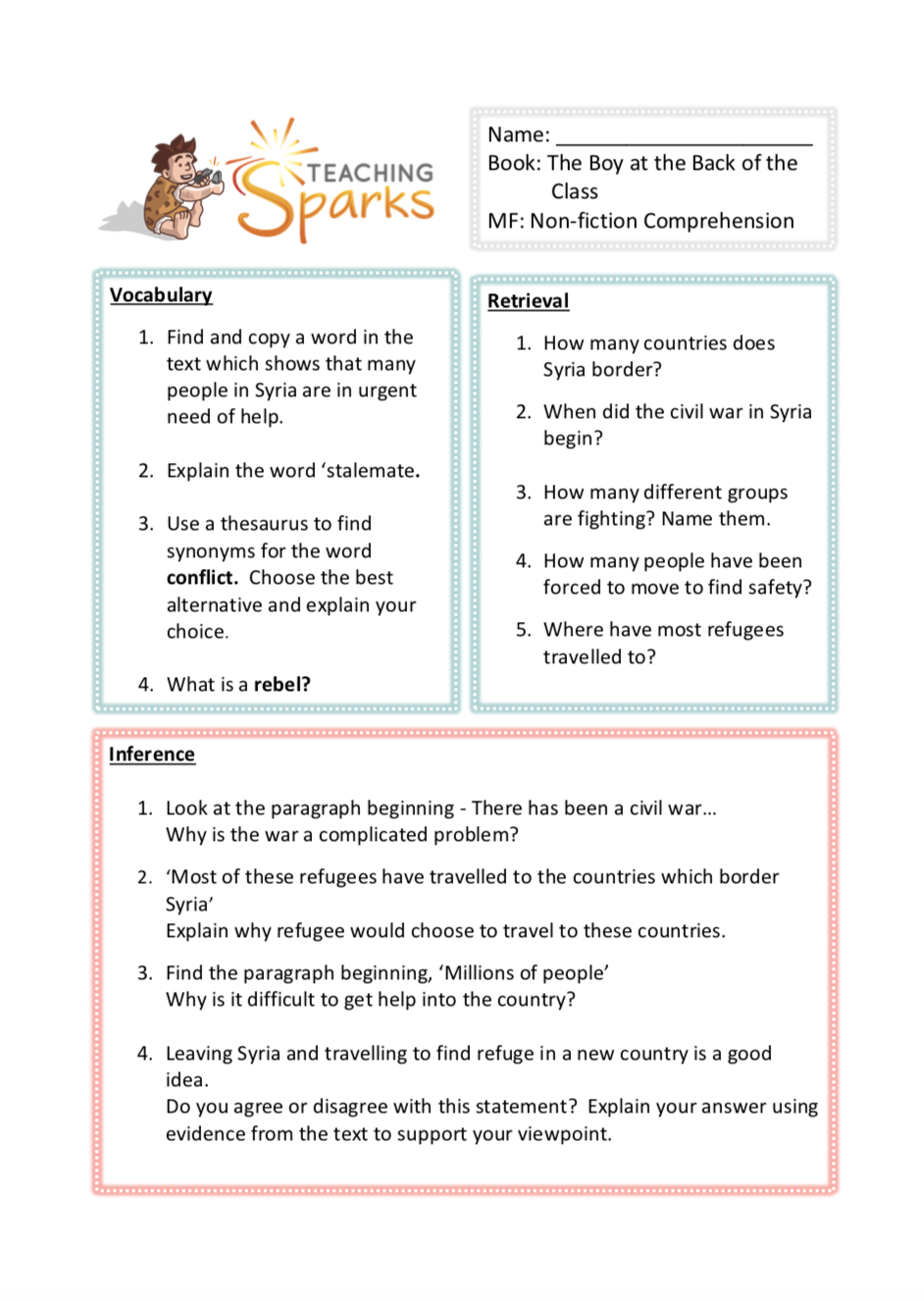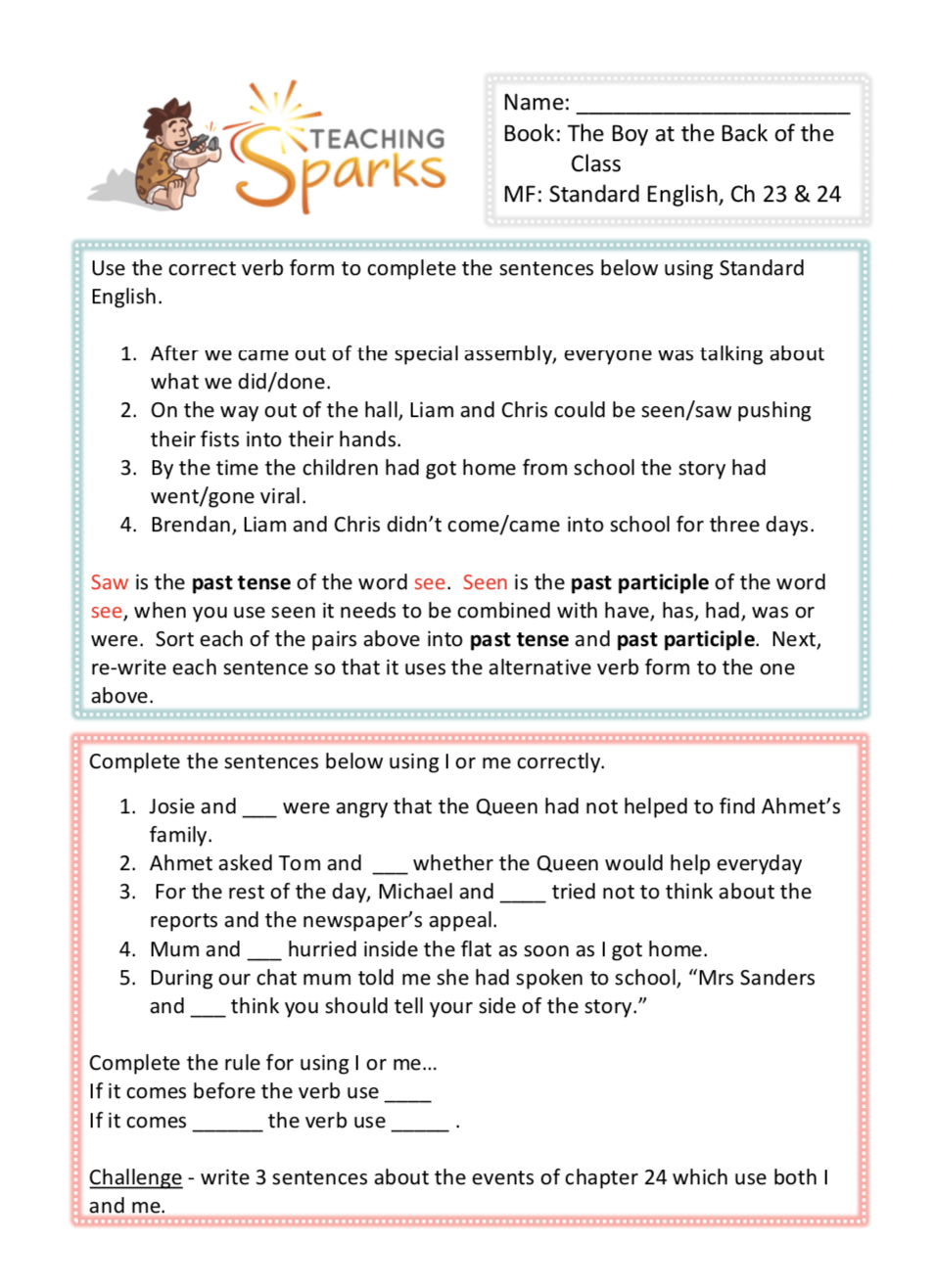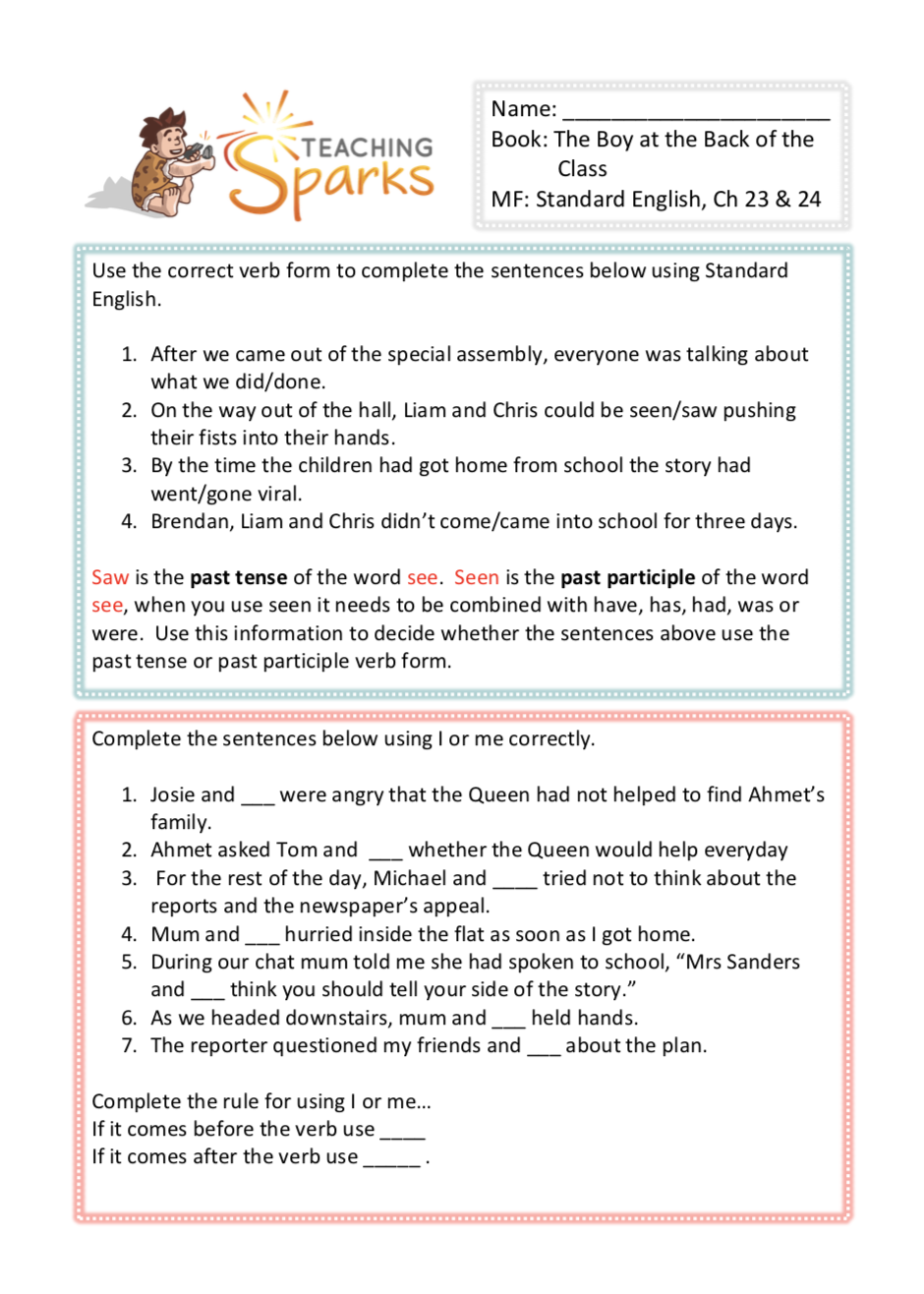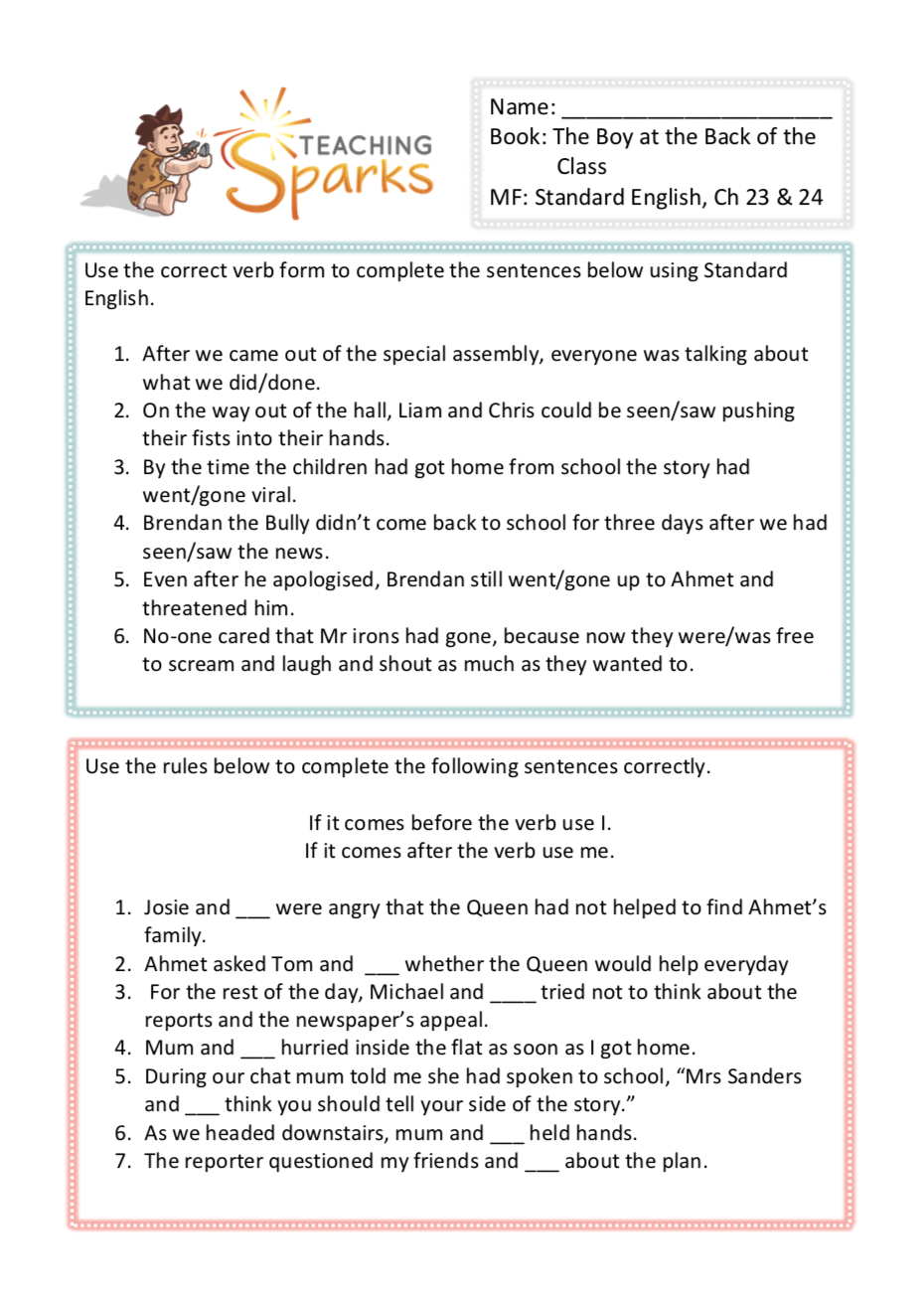The Boy at the Back of the Class
The Boy at the Back of the Class by Onjali Q Rauf
Told with humor and heart, The Boy at the Back of the Class offers a child’s perspective on the refugee crisis, highlighting the importance of friendship and kindness in a world that doesn’t always make sense.
There used to be an empty chair at the back of Mrs. Khan’s classroom, but on the third Tuesday of the school year a new kid fills it: nine-year-old Ahmet, a Syrian refugee.
The whole class is curious about this new boy–he doesn’t seem to smile, and he doesn’t talk much. But after learning that Ahmet fled a Very Real War and was separated from his family along the way, a determined group of his classmates bands together to concoct the Greatest Idea in the World–a magnificent plan to reunite Ahmet with his loved ones.
This accessible, kid-friendly story about the refugee crisis highlights the community-changing potential of standing as an ally and reminds readers that everyone deserves a place to call home.
Questions for Every Chapter - 312 Questions
NEW IN!!!!
We have created this unit ofresources to help reduce your planning time when reading ‘The Boy at the Back of the Class with your KS2 class.
Each chapter has 12 questions. The first four in each chapter are usually retrieval, the next four are linked to SPAG, and the final four are the more challenging questions: summarising, inference, authorial technique, sequencing and more.
A fantastic time-saving activity for this term.
Unlock ResourceMain Focus: Homophones - Chapter 1
Homophones are words which sound the same but are spelt differently. Near homophones have very similar spellings and can sound very similar depending on how they are pronounced.
Examples –
advice/advise practice/practise
device/devise license/licence
stationary/stationery affect/effect
alter/altar guessed/guest
You class will complete the sentences using the correct homophones.
Unlock ResourceMain focus: Character Study - Ahmet
This KS2 resource focuses on Ahmet and allows your class to delve deeper into the character and the reactions and actions of other characters.
This Year 5 | Year 6 activity explores appearance, belongings and the perceptions of others.
Unlock ResourceMain Focus: Comprehension - Chapter 5
This is a KS2 comprehension resource linked to Chapter 5 of The Boy at the Back of the Class book.
The resource has been differentiated three ways to cater for Year 5 and Year 6 classes with questions split into categories to help identify each child’s area of strength and areas for improvement within comprehension.
Unlock ResourceMain Focus: Different Viewpoints - Chapter 7
This UKS2 task looks at the different viewpoints of the characters: the children and Mr Irons in chapter 7.
The second reading task is to write a recount of the events of playtime, from both of the character’s points of view, switching between them both.
First, your class will draw a table like the one in the resource and complete each section with their different accounts of what has happened. One has been done as an example to show your Year 5 | Year 6 class.
Unlock ResourceMain Focus: Apostrophes for Possession - Chapter 8
Apostrophes can be used to show who owns something or who an object belongs to.
Your KS2 class will re-write the following sentences in the possessive form and correct the text by adding or removing apostrophes as appropriate.
This Year 5 / Year 6 activity focuses on chapter 8 of The Boy at the Back of the Class and apostrophes.
Unlock ResourceMain Focus: Diary Writing - Chapter 10
In Chapter 10 the reader learns about Ahmet’s journey from Syria and it becomes clear why his rucksack is so important to him. Your Year 5 / Year 6 class will complete activities that recount events linked to the journey of Ahmet’s rucksack.
Activity 1
Deepen understanding of why the rucksack is so important and the impact it had when the bully filled it with beans.
Activity 2
Ahmet has carried his rucksack all the way from his home in Syria to his new life in England. It is a symbol of his journey. Your task is to write a diary of the rucksack’s journey, using the following points to help you remember the events.
Unlock ResourceMain Focus: Comprehension - Chapter 15 & 16
This comprehension is based on chapter 15 and 16 of the story. Check the understand of your class after reading the chapters.
We have created a fantastic range of questions linked to: inference, vocabulary and retrieval.
Unlock ResourceMain Focus: Newspaper Report - Chapter 19
This resource is designed to help your KS2 class think about features of a newspaper report and is broken down into the following categories:
Part 1: Introduction
The task is to write a newspaper report on the events at Buckingham Palace.
Read the chapter and make notes on the following points for your introduction.
Part 2:Events
Order the following events from the chapter to help structure the main section of your report.
Part 3: Eyewitness accounts
Now imagine what a witness would say if they saw the following:
The child chased after the guards and grabbed their elbow before shouting at them.
Part 4: Bias
Your report should suggest that something strange was taking place.
Edit this sentence so that it shows this.
Unlock ResourceMain Focus: Non-Fiction Comprehension
This is a non-fiction piece of writing linked to Syria. Your class will read the extract and answer the questions to learn more about the overall picture of Syria, the climate, the civil war, refugees and more.
Your class will complete a comprehension and use the text and their understanding to help answer the questions.
Unlock ResourceMain Focus: Standard English - Chapter 24 & 25
Saw is the past tense of the word see. Seen is the past participle of the word see, when you use seen it needs to be combined with have, has, had, was or were.
Your class will sort each of the pairs above into past tense and past participle. Next, they will re-write each sentence so that it uses the alternative verb form to the one above.
Your class will also complete the sentences using ‘I’ or ‘me’ correctly.
Unlock Resource
